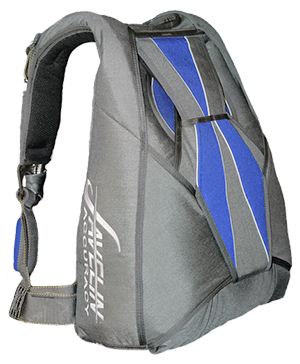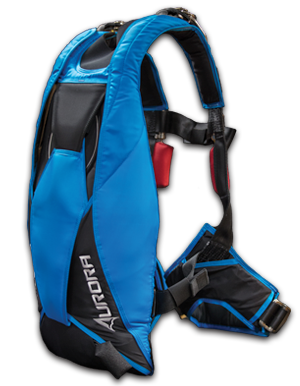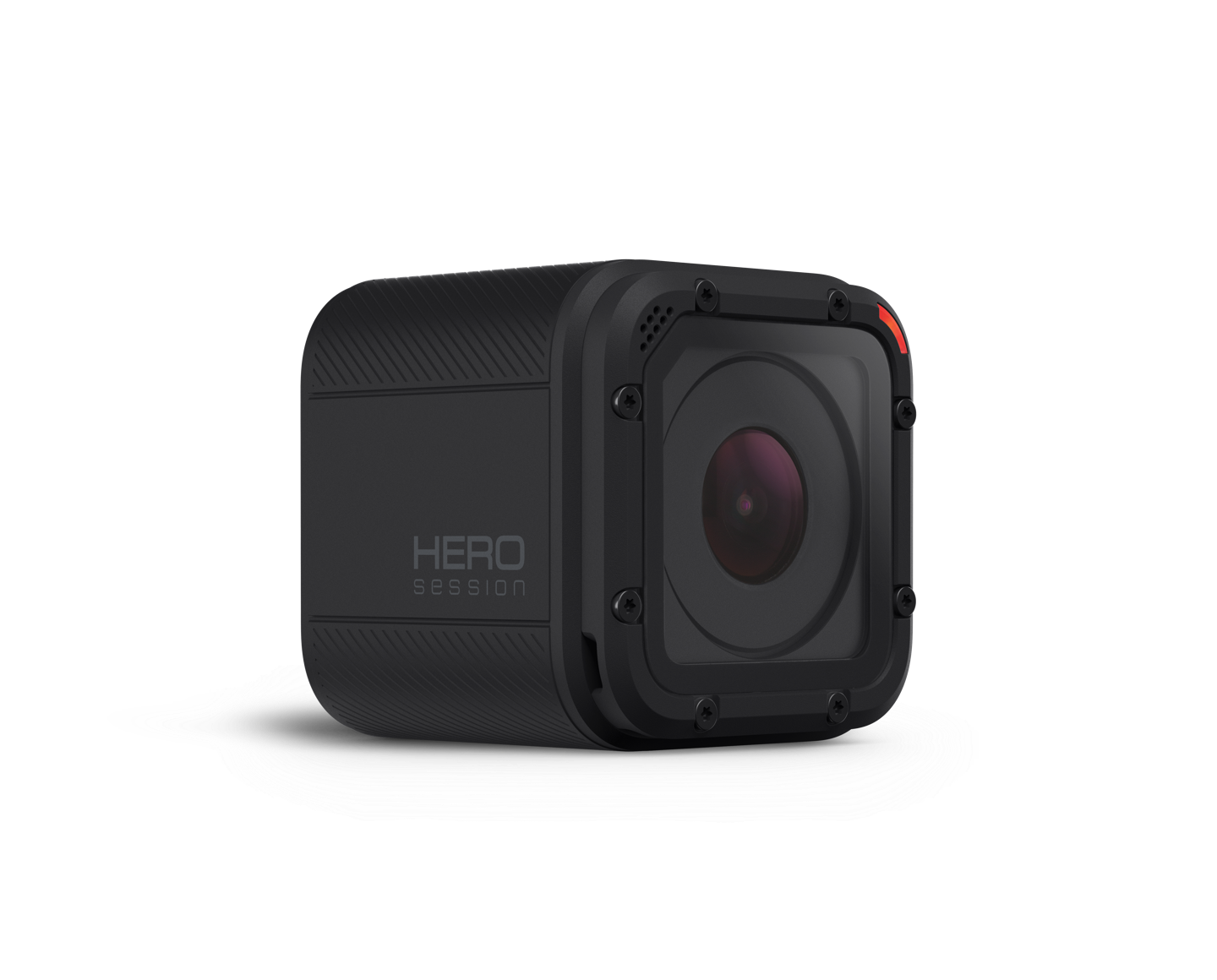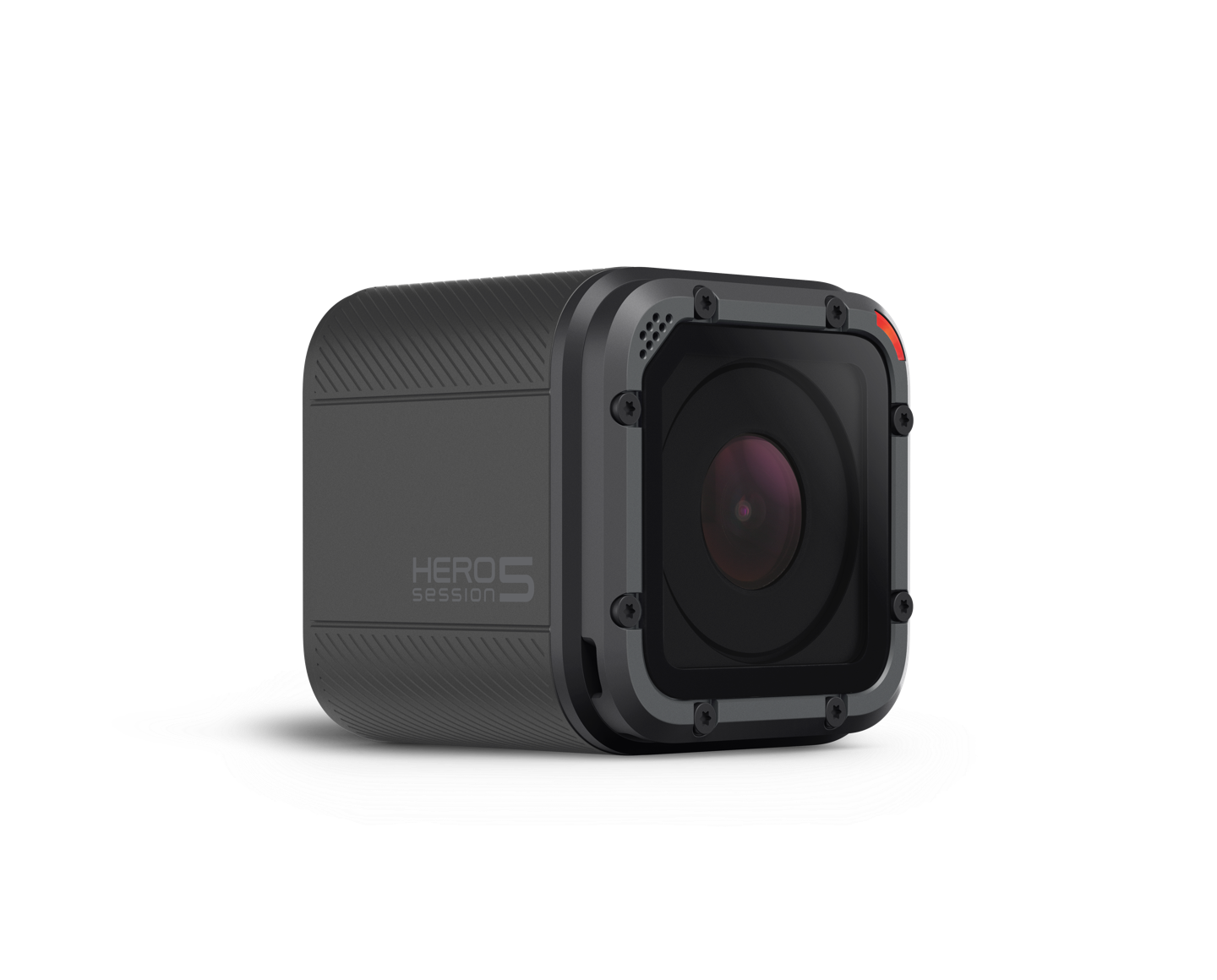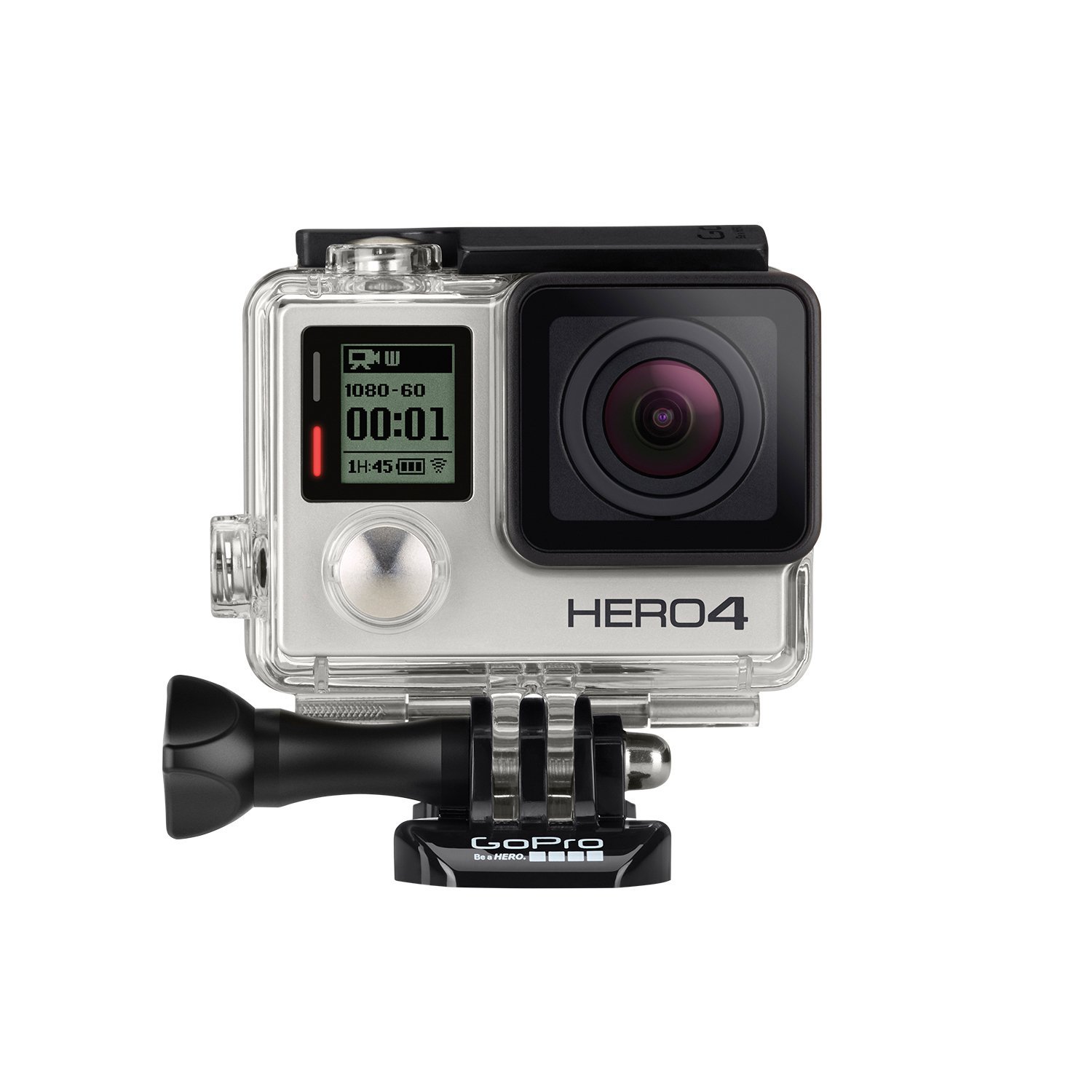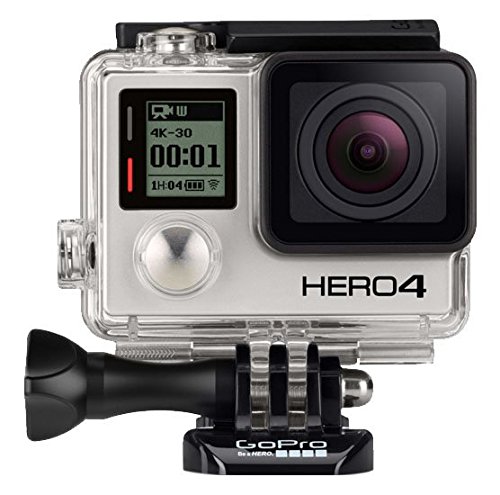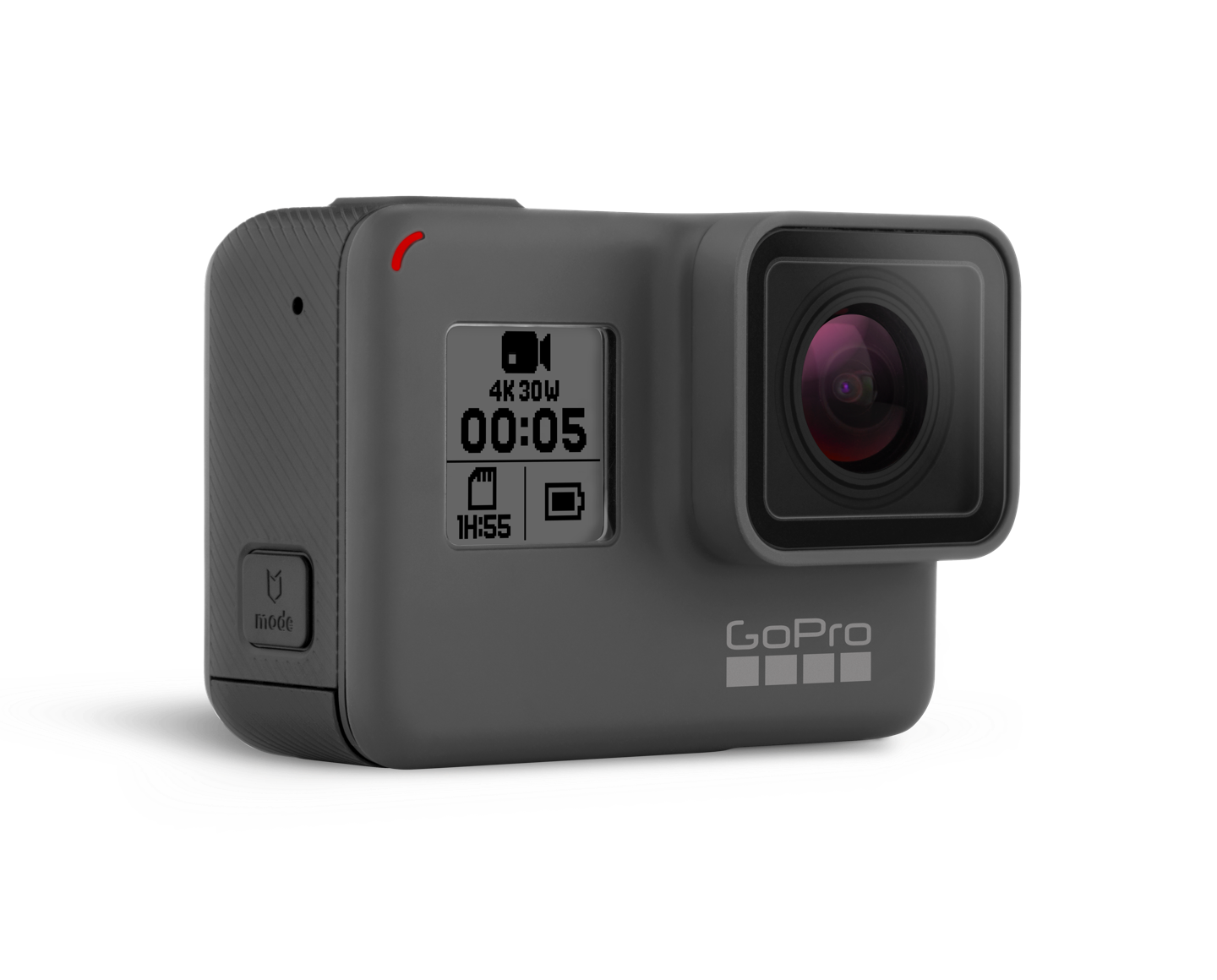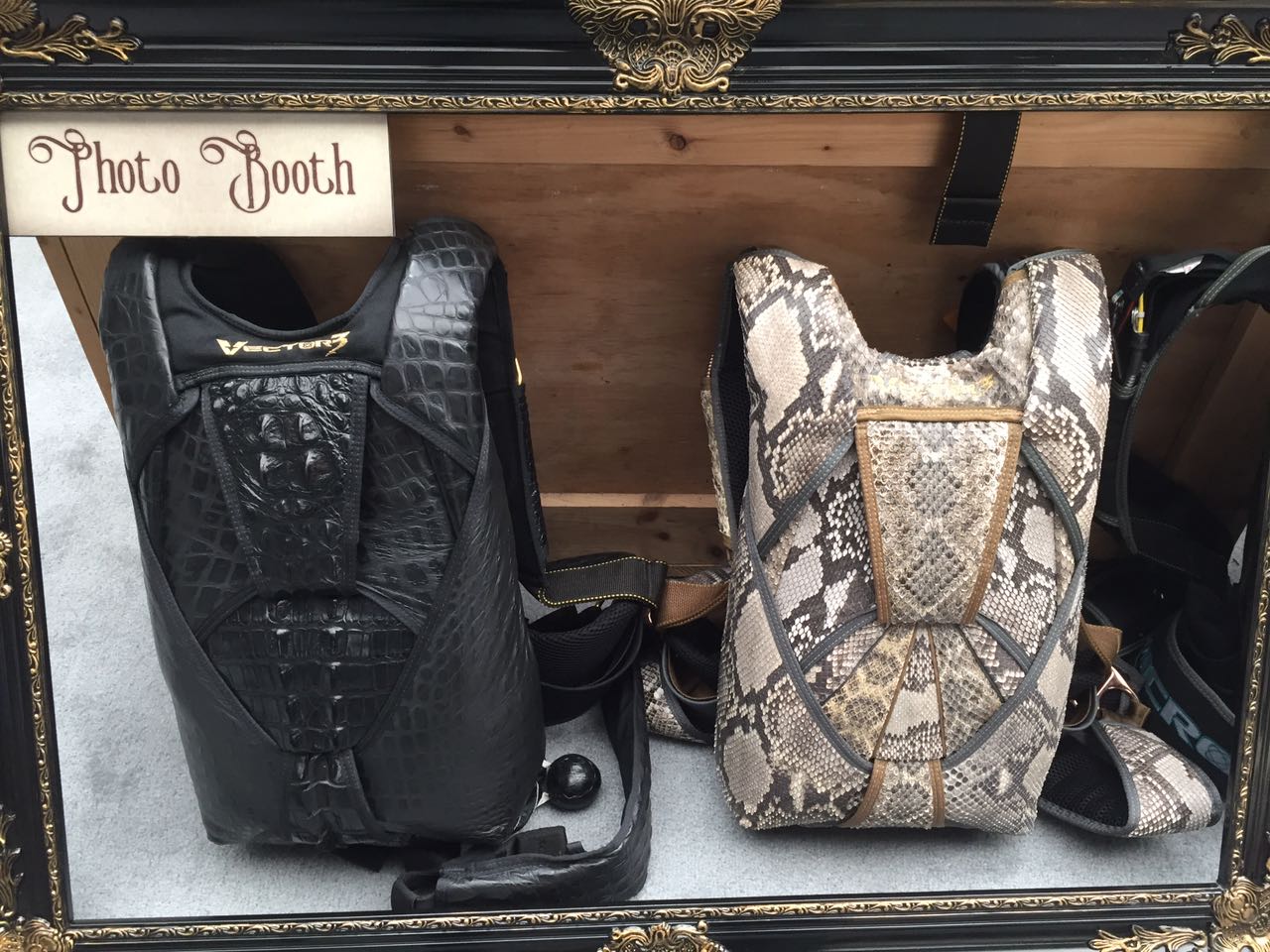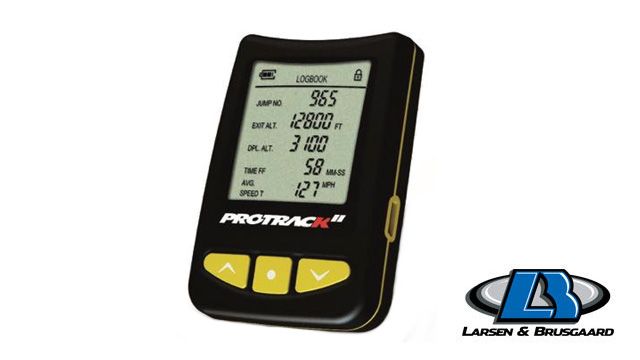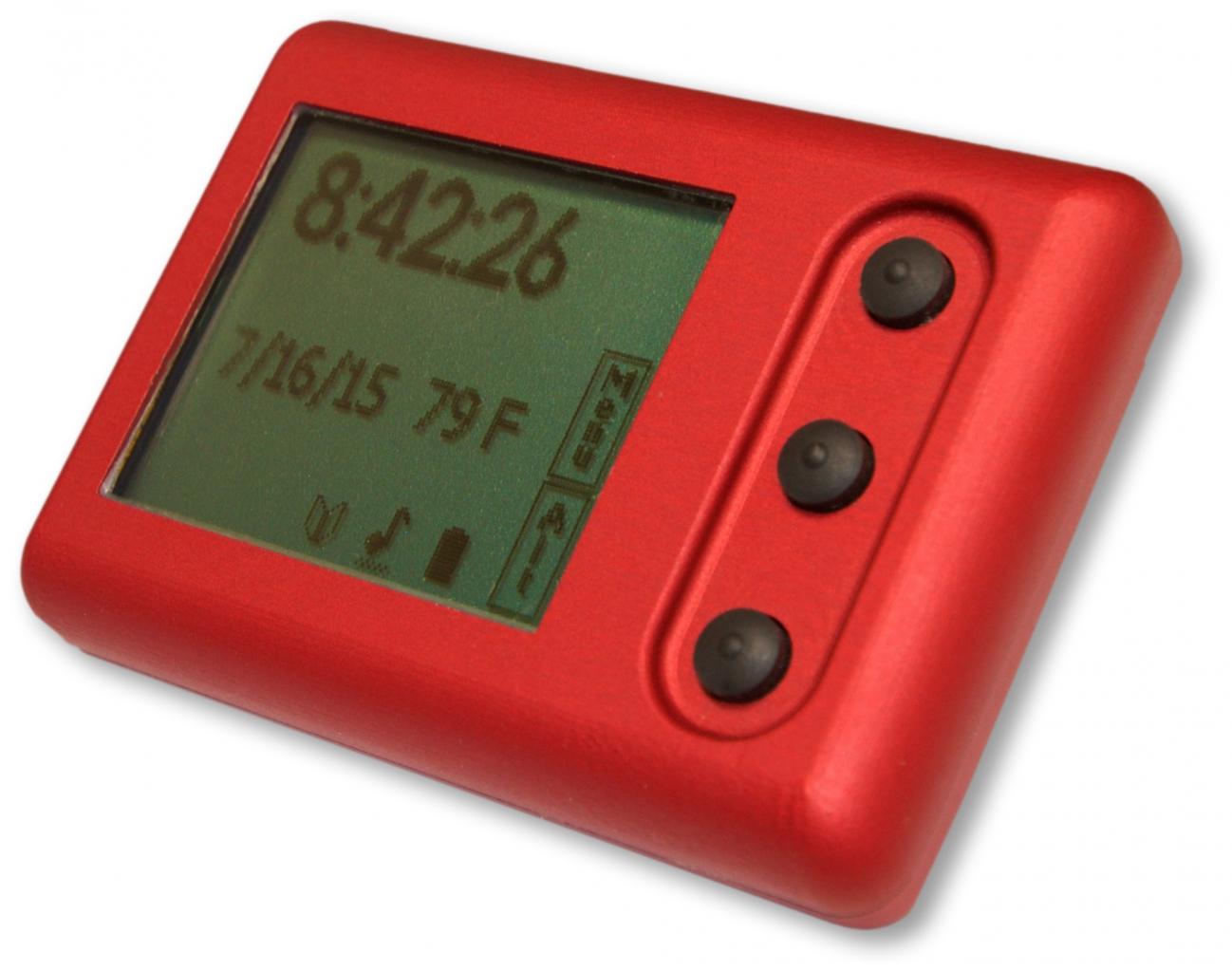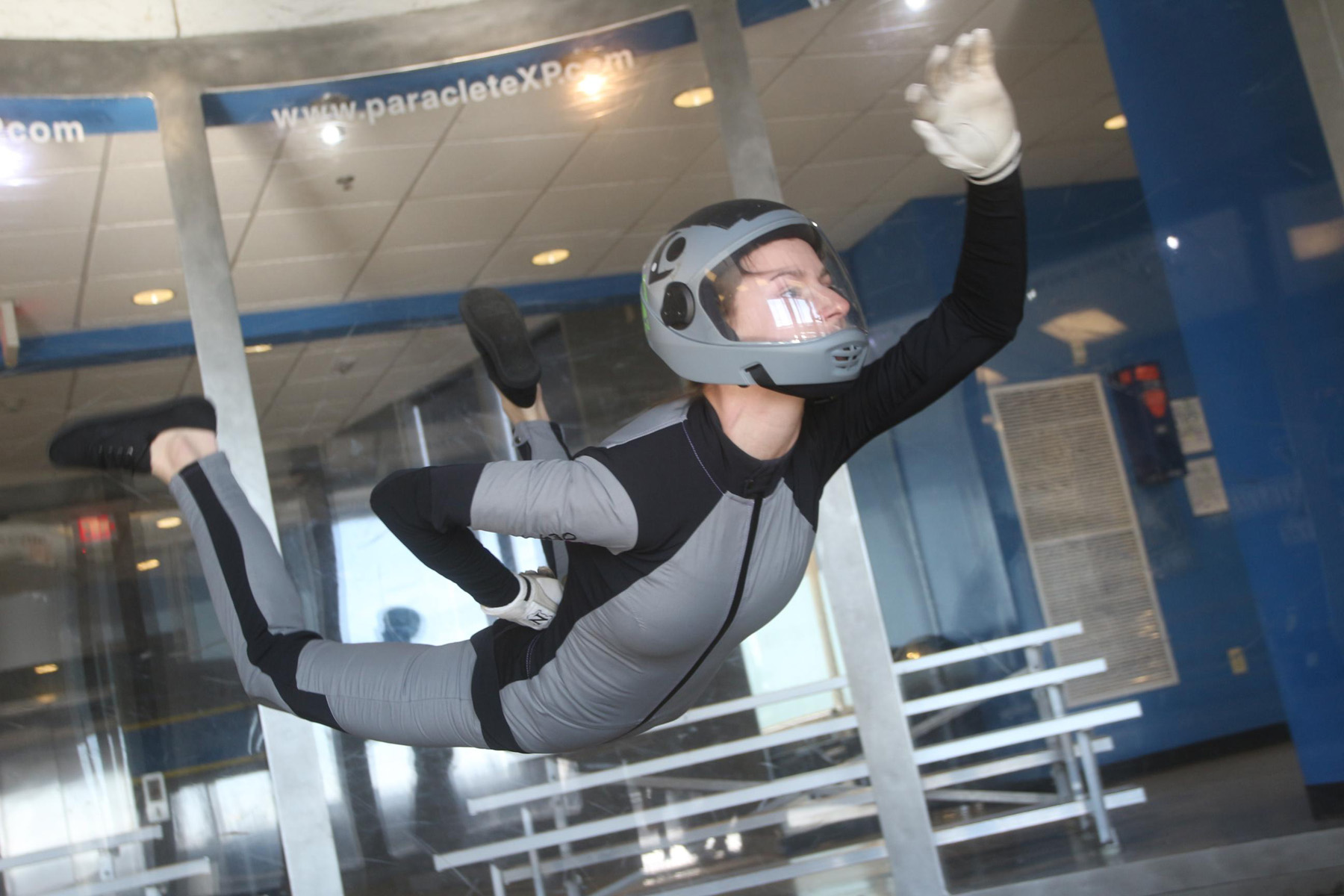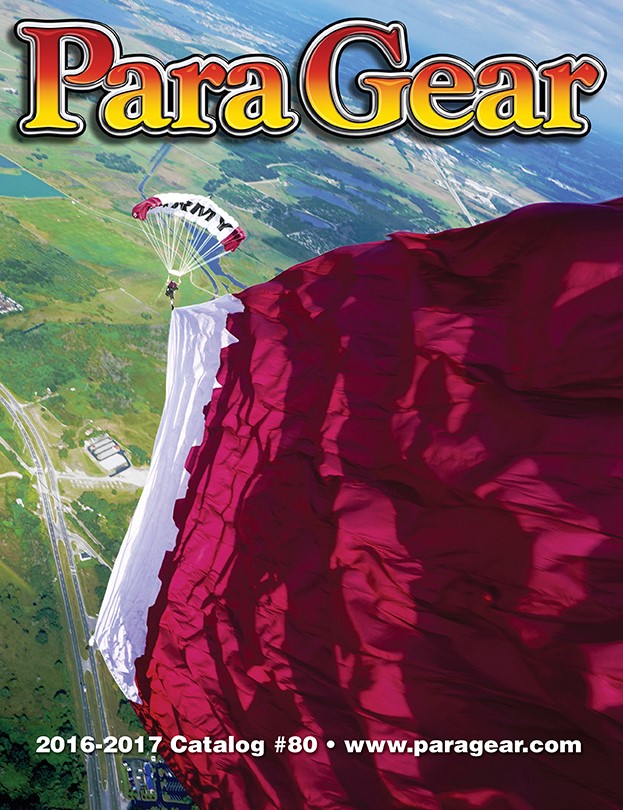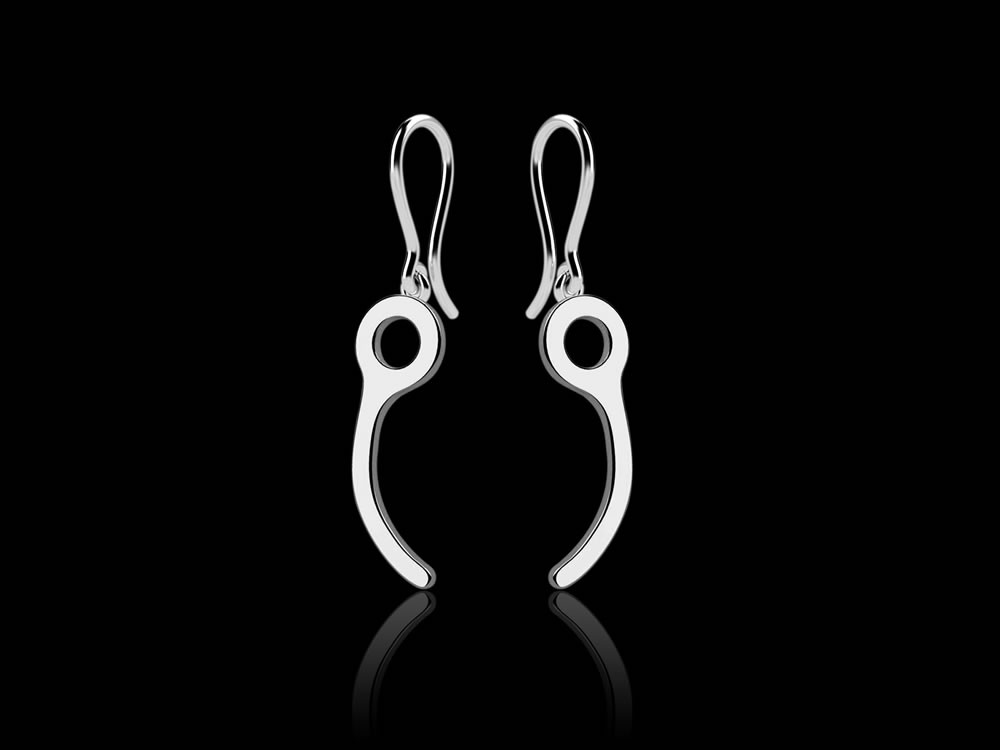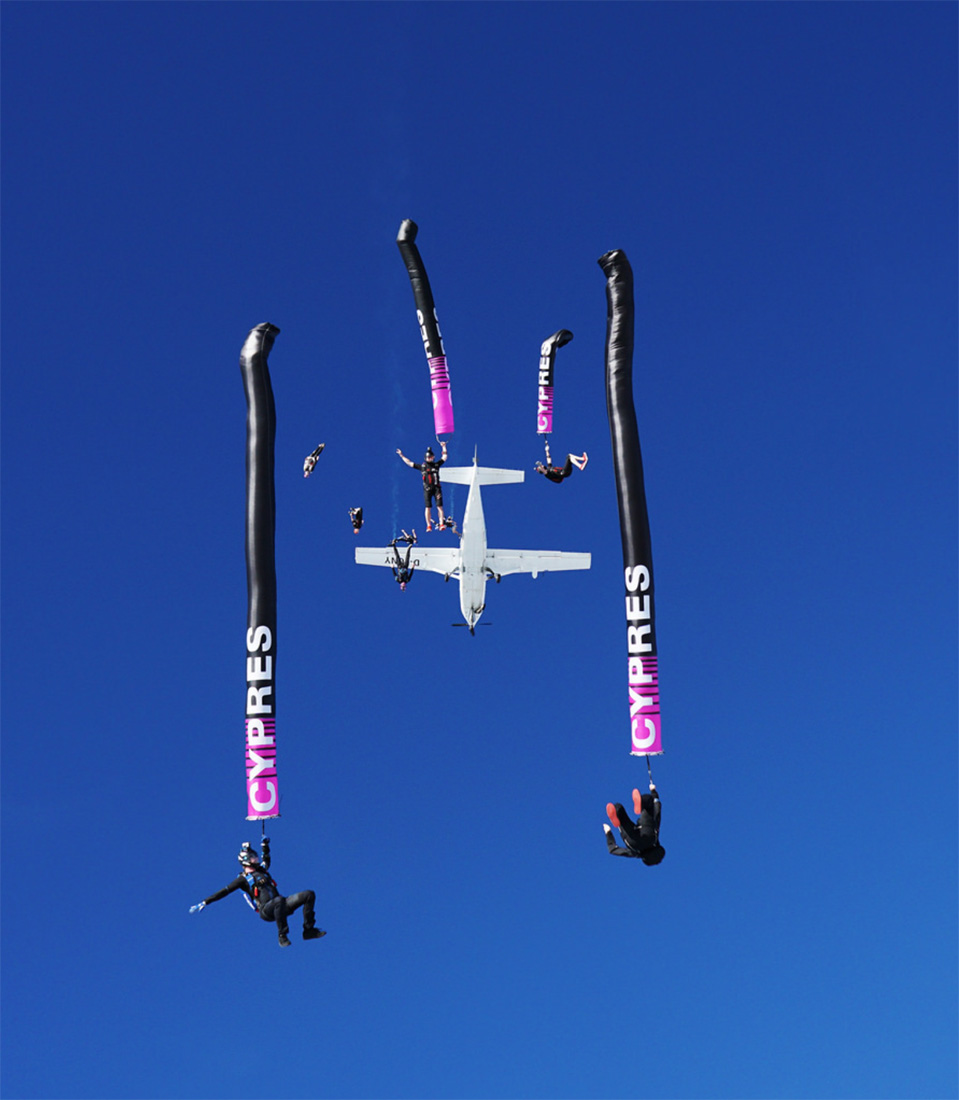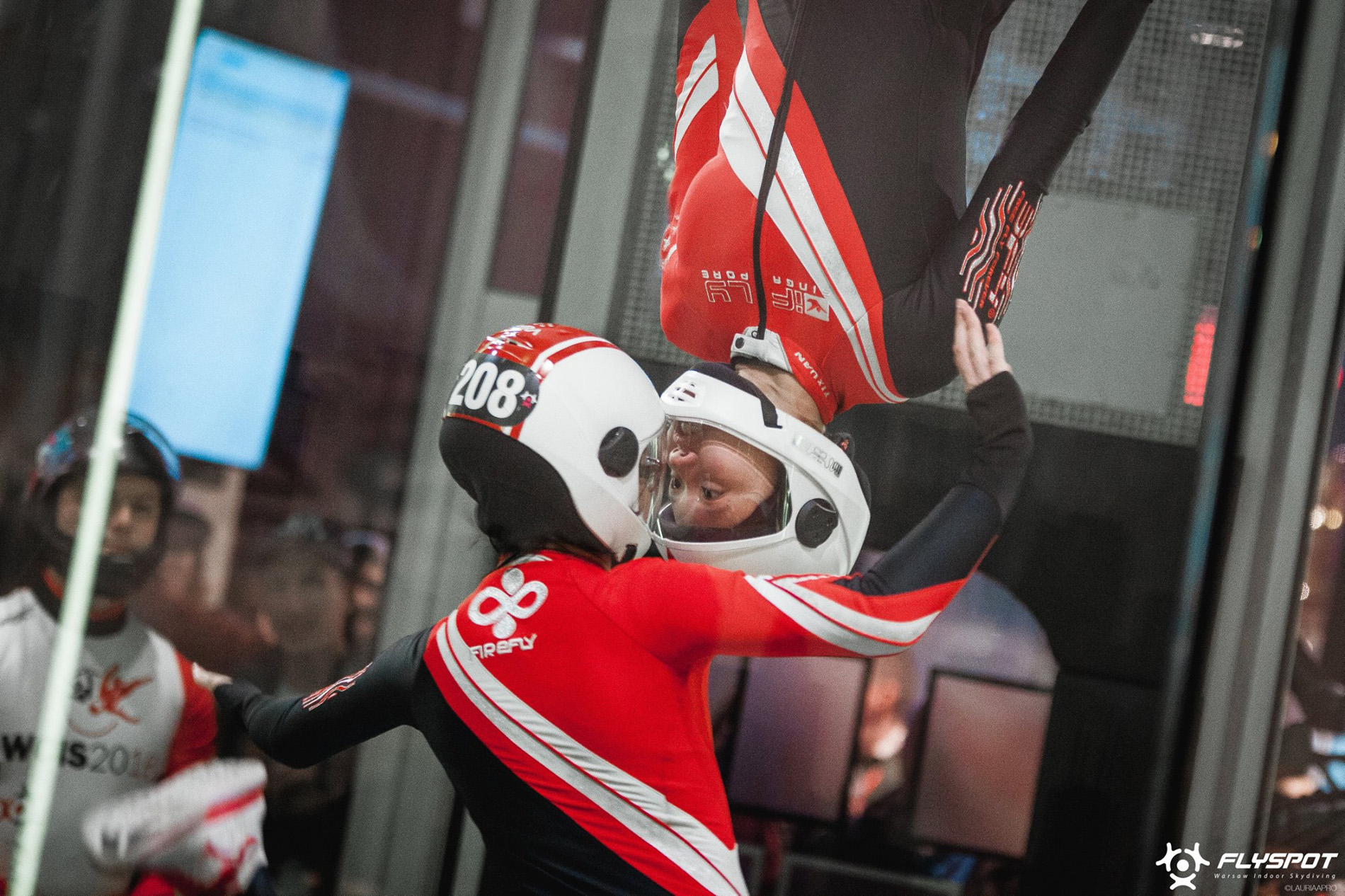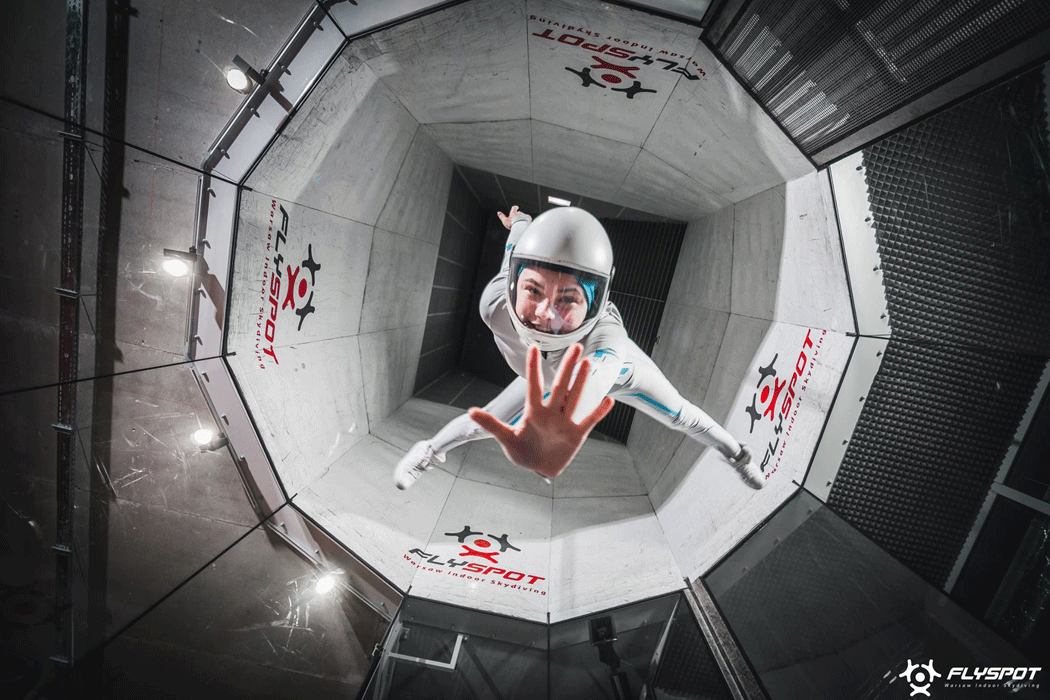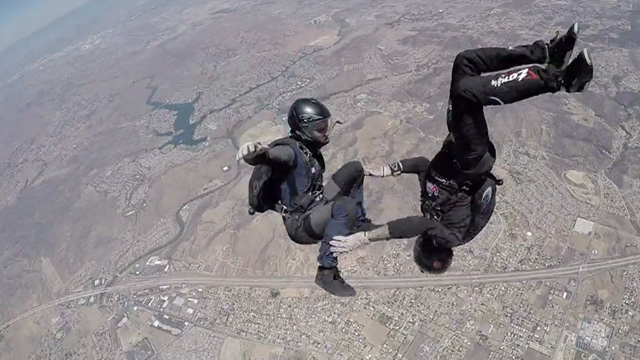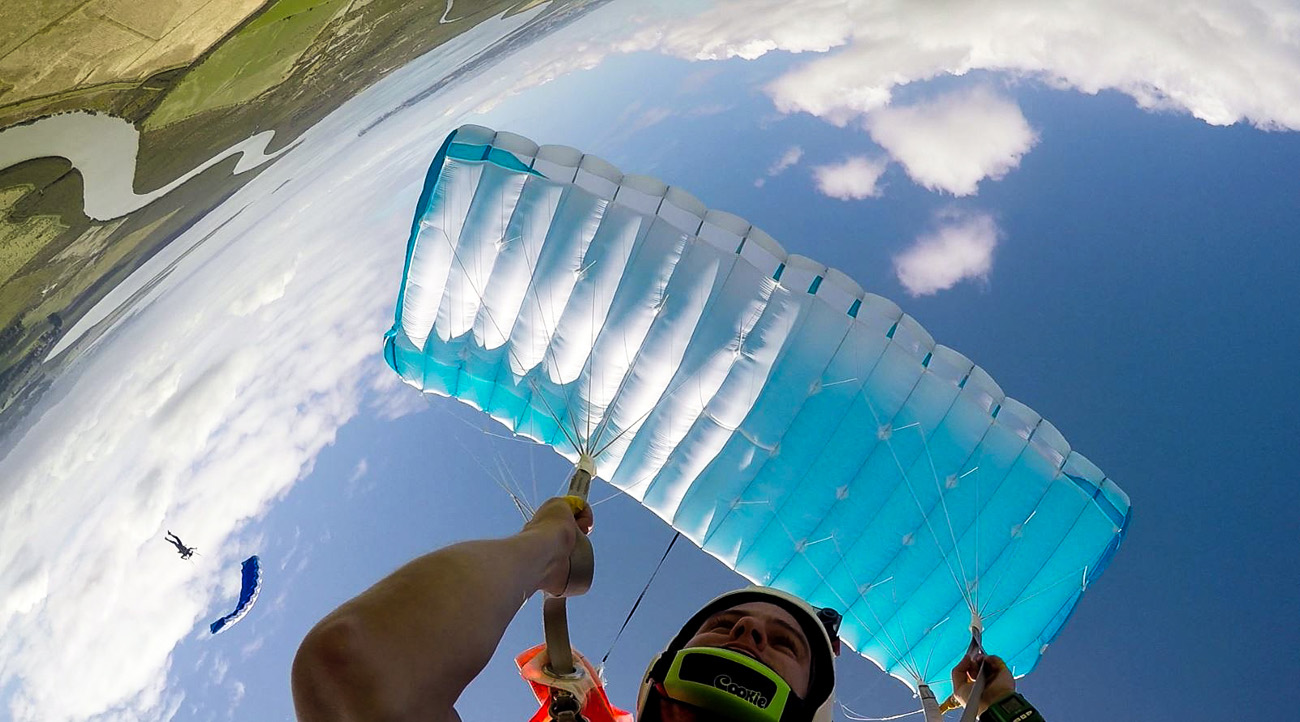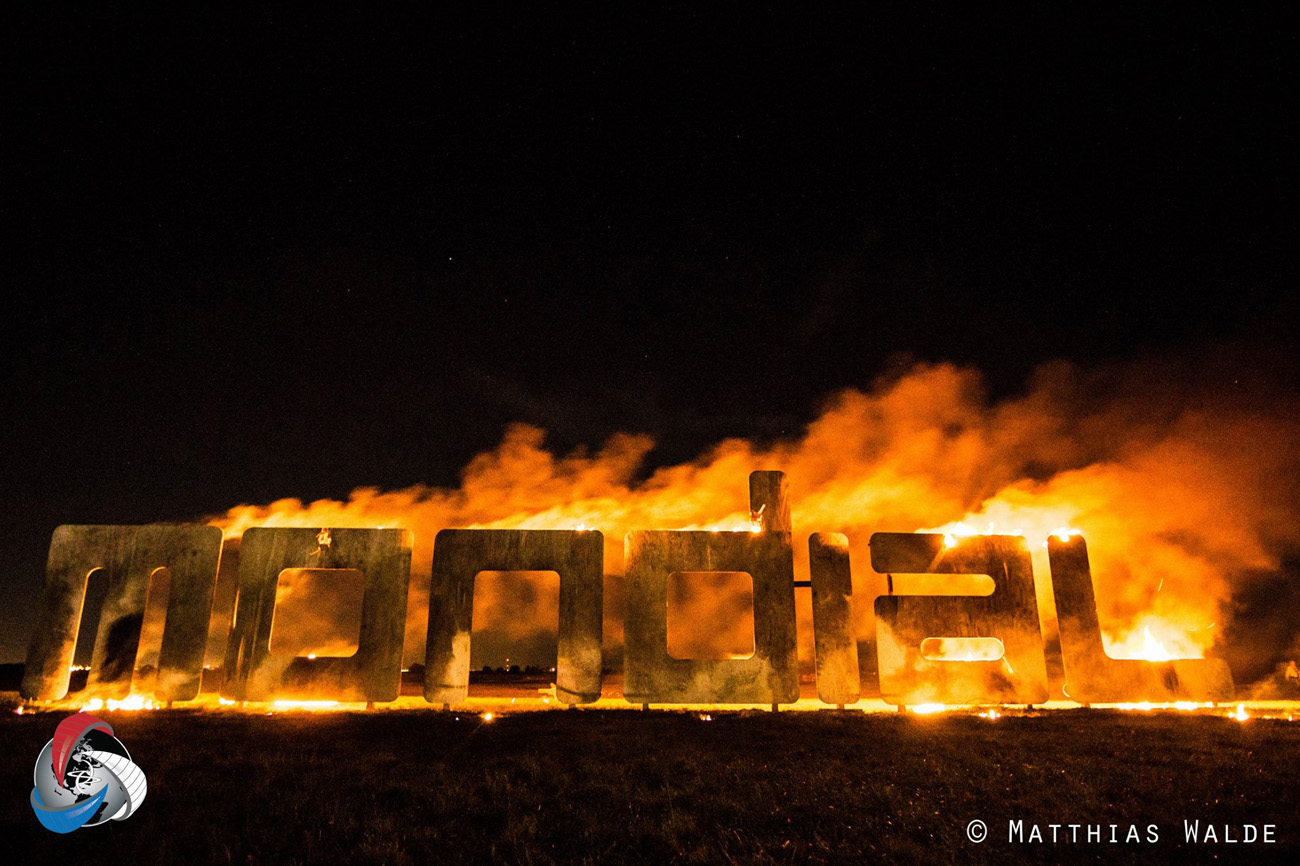-
Content
-14 -
Joined
-
Last visited
-
Days Won
1 -
Feedback
0%
Content Type
Profiles
Forums
Calendar
Dropzones
Gear
Articles
Fatalities
Stolen
Indoor
Help
Downloads
Gallery
Blogs
Store
Videos
Classifieds
Everything posted by admin
-
The Accuracy Javelin was designed based on input from some of the world’s most accomplished accuracy competitors. The dynamic main and reserve sizing allows for a main parachute suitable for competition accuracy and a reserve parachute more suitable for the jumpers body size. The rig is SkyHook compatible and is available with most of the same options as the Javelin Odyssey. “You can’t land on it, if you don’t get over it.” Sun Path consulted with some of the world's top competitors and foremost authorities in the discipline and they all agreed on one thing. You have to be sitting up straight in the harness on approach. The main ring placement on the Accuracy Javelin allows the jumper to sit up straight in the harness and focus on a vertical approach to the target, resulting in more dead centers. A note from a world champion! “Thank you very much for such a well-built rig. It fits perfectly, and sits me straight up in the saddle. It is amazingly comfortable whether I am on the ground, in the plane or under canopy. The main canopy fits nicely in the pack tray and I never struggle to close the container, which makes a huge difference I am making ten jumps a day and packing for myself." — Cheryl Stearns
-
The Aurora Wing Suit Container is the culmination of a two-year project that was specifically focused on providing Competition and Recreational wing suit pilots a purpose-built container with the emphasis placed on main deployment characteristics during forward flight. The entire harness container system was designed with comfort in mind while improving aerodynamics. The Javelin Aurora is designed for Wingsuit use only, and is not intended for BASE jumping. Neoprene Collar is an Aerodynamic Advantage Eliminating Airflow Under the Container. Oversized BOC Pocket Allows Precise Positioning of Deployment Handle. Adjustable Lateral: Allows the Jumper to Accurately Position the Container in Response to Different Wing Suit Designs. Magnetic Riser Covers: The Magnetic Riser Covers Were Designed to Stay Closed During Flight, and Open Evenly During Low-Speed Deployments. Drop Away Main Container Design Does Not Impede Main Bag Extraction During Deployment Tapered 2-Stow Deployment Bag Wing Suit Specific Pilot Chute & Handle
-
GoPro, simplified. HERO Session™ is ready for any adventure with its one-button simplicity and compact waterproof design. So small, so simple. High-Performance Video + Photo High resolution of 1440 pixels per inch delivers sharp, professional video. Frame rates up to 100 frames per second creates smooth slow-motion playback. Compact Mounting Sleek and compact, HERO Session captures amazing new perspectives. Time Lapse + Burst Photos Set time lapse at intervals from 0.5 to 60 seconds. HERO Session can also take a burst of photos up to 10 frames per second. Bluetooth® + Wi-Fi Bluetooth and Wi-Fi make it easy to stay connected with GoPro apps, accessories and more. Simple One-Button Control A single press of the shutter button powers the camera on and starts recording automatically. Rugged + Waterproof Durable by design, HERO Session is waterproof to 33ft (10m) without a housing. Wear it. Mount it. Love it.™ Capture life in a whole new way with 30+ GoPro mounts and accessories, including 3-Way™, Chesty and more. Access + share from anywhere. An optional GoPro Plus subscription makes it easy to access, edit and share your photos and videos on your phone—anytime, anywhere.
-
The best, only smaller. HERO5 Session combines 4K video, one-button simplicity and voice control all in a small, waterproof design. Voice Control Enjoy hands-free control of your GoPro using simple voice commands. Compact Mounting Sleek and compact, HERO5 Session captures amazing new perspectives. 4K Video + 10MP Photo Stunning 4K video, 10MP photos in Single, Burst, and Time Lapse modes. Advanced Video Stabilization HERO5 Session can capture stunningly smooth video handheld, mounted to your favorite gear and more. Simple One-Button Control A single press of the shutter button powers the camera on and starts recording automatically. Rugged + Waterproof Durable by design, HERO5 Session is waterproof to 33ft (10m) without a housing. Wear it. Mount it. Love it.™ Capture life in a whole new way with 30+ GoPro mounts and accessories, including 3-Way™, Remo and more. Access + share from anywhere. With an optional GoPro Plus subscription, HERO5 Session can auto upload photos and videos directly to the cloud for easy viewing, editing and sharing on the go.
-
Built-in touch display for easy camera control, shot-framing and playback Professional 1080p60 and 720p120 video with 12MP photos at up to 30 frames per second Built-in Wi-Fi and Bluetooth support the GoPro App, Smart Remote and more Improved camera control and built-in video trimming lets you create and save short video clips right on your camera Protune™ with SuperView™ delivers cinema-quality capture and advanced manual control for photos and video with the world’s most immersive wide-angle field of view
-
GoPro Hero 4 Black Offers a: Professional 4K30, 2.7K60 and 1080p120 video, 720p240 video for super slow-motion playback and 12MP photos at up to 30 frames per second. Built-in Wi-Fi and Bluetooth® support the GoPro App, Smart Remote and more. Improved camera control and built-in video trimming lets you create and save short video clips right on your camera. Protune™ with SuperView™ delivers cinema-quality capture and advanced manual control for photos and video with the world’s most immersive wide-angle field of view. Night Photo and Night Lapse offer customizable exposure settings for nighttime shooting
-
HERO5 Black is the most powerful and easy to use GoPro ever, thanks to its 4K video, voice control, one-button simplicity, touch display and waterproof design. Voice Control Enjoy hands-free control of your GoPro using simple voice commands. 2-Inch Touch Display Preview and play back your shots, change settings and trim your footage, all on your GoPro. Rugged + Waterproof Durable by design, HERO5 Black is waterproof to 33ft (10m) without a housing. Simple One-Button Control A single press of the shutter button powers the camera on and starts recording automatically. Advanced Video Stabilization HERO5 Black can capture stunningly smooth video handheld, mounted to your favorite gear and more. Wear it. Mount it. Love it.™ Capture life in a whole new way with 30+ GoPro mounts and accessories, including Karma™, 3-Way™, Remo and more. Access + share from anywhere. With an optional GoPro Plus subscription, HERO5 Black can auto upload photos and videos directly to the cloud for easy viewing, editing and sharing on the go.
-
Each year some of the manufacturers show off some unique and exciting rig designs at PIA, sometimes these rigs are actually able to be put into use, while others are simply demo rigs to show off some really cool design concepts. This year saw a couple of really awesome looking rigs, with a transparent rig from Sun Path and an amazing "steam punk" rig from the guys at United Parachute Technologies. United Parachute Technologies Sun Path Which of these rigs would you most like to be flying?
-
With the release of the new ProTrack 2 we have a look at exactly how many more things it offers. ProTrack II DesignWhen falling through the sky it is not only a jolly good idea to have a little gizmo the beeps in your ear to remind you to do stuff - in many situations it is mandatory. For some people the simplest set of warnings are sufficient - one distinct electronic chirrup for each of break-off and deployment, then an angry screechy one for being lower than is safely acceptable/possibly getting told off about what you just did. However, even the most rudimentary electronic devices now come packaged with a tiny computers buried inside that have enough computational power to perform orbital mechanics and help serve the purpose of pacifying your life’s need to do anything much other than binge watch old episodes of Deep Space Nine on Netflix. Original ProTrack DesignI bought an original ProTrack as my first set of beeps back in 2007 as I am a big nerd and it was the most fanciest audible altimeter available. I remember being tremendously excited about how it allowed me to download the accumulated digital data from my skydives and then produce graphs from the correlated information to share on my MySpace page - thus proving beyond all doubt I was both cooler and smarter than the people who laughed at me in school for my ongoing interest in toy soldiers. Technology moves fast and our insatiable appetite for mobile phones that do more and more has led to some mind-boggling miniaturisation in our daily lives. We are now very used to tiny electronic doodads with little screens that do many things. So - we some beeps to remind us of a few important things in freefall, but how much more is it possible or necessary to do with an audible altimeter if we apply the technology we have available now? With this update of the ProTrack, what Larsen and Brusgaard have done is smoosh together the features of the original device with those of their flagship audible altimeter - the Quattro - then sprinkle it with some modern goodness that we recognise from things we see every day in phones and such. If we break it down the ProTrack 2 can be divided into categories as follows:Things ProTrack Did Already: Mass Storage: It records the details of your jumps. Including accumulated freefall time, which is nice - especially if you find adding up units of time a pain in the ass. Connectivity: There is much to be said for a digital record of you achievements. A meticulously crafted pen and ink logbook is beautiful artefact of your skydiving career (and still a requirement for advancement in many places), but equally splendid in a different way is a lovingly curated online adventure zone that enjoys all the fruits of modern computing. Exit/Deployment Altitude: With time one learns that the altitude advertised by a Dropzone is not always what you get. Many variables determine your precise altitude when you are when you are in the right place to get out of the plane and mostly it is not a big deal. It is nice to have proof if you find you are getting fleeced though. Things The Quattro Does That The ProTrack 2 Does Too:Low Speed Warnings: These are the swoop alarms we know and love. They are programmed to register low freefall speeds too, which can be right useful if you are into complex wingsuit flocking where they can be set to signal points along a flight path or breaking into groups or stuff like that. Beeps Going Up: Having settings to signal certain altitudes in the plane is a convenience that can be beneficial. Efficiency with your jump preparations leads to safer and better skydive and good awareness is crucial. Always On: You don’t have to remember to switch it on and off. Unless you want to. New Things The ProTrack 2 Does Now:Micro USB: Which seems so normal but is new and exciting as the old model came with a cradle thingy that had required you to have a serial port (a serial port?) or, for Mac users - some kind of laborious solution. The JumpTrack software offered by Larsen and Brusgaard has been around a good while and although due for an overhaul it is still used around the world. Live Jump Playback: With 2MB of internal flash memory the unit is able to replay the speed profile of your jump in real time. (Approximately 200 jumps with 2 minute profiles or 26 jumps with 15 minute profiles). If you are prepared to put in some effort (like watching side-by-side with video) there are things you can learn from this. Economy Mode: These devices don’t use very much energy and if you get the batteries from somewhere sensible instead of a dropzone shop then they don’t cost very much. However, If your jumping is random or infrequent then the ability to actually switch it off properly means your battery will last a while longer. A modest boon, but nice if you gain satisfaction from managing the small things. Useful but very 90s looking software. Note the attached videos and imagesWhile there are undoubtably people out there who just desire some beeps that beep at the right time and nothing much else, devices like the ProTrack 2 offer extra information that can be very valuable for those that are inclined to manage and study it. Skydiving represents a huge investment in your own skill and experience, and the ability to analyse accurate, reliable data relating to trends in your performance is another way of squeezing a little a little more from your jumps.
-
Atlas is an electronic altimeter with a digital display which can be used as either an audible or visual instrument. Atlas has the following features: Case Ruggedized machined aluminum case with reduced edges and corners Improved USB charging & data transfer through waterproof Micro USB Raised easy-push buttons with protective case recess Waterproof up to six feet for up to one hour Alarms Eight alarm groups; Includes both free fall and/or canopy alarms Customizable through Paralog & Neptune Maintenance Utility (NMU) Canopy alarms include approach alarms preceding each selected alarm altitude Canopy alarm volume is adjustable for those who wish to hear alarms from their wrist Logs Logs over 200 jump Profiles and over 2,500 jump Summaries Jump odometer for fast-paced training days Up to 32 dropzone and aircraft names can be entered using Paralog-NMU Time under canopy and free fall time are logged Display Time can be set to 12 or 24 hour format Date can be set to USA or International format Temperature can be displayed in F or C Speed can be displayed in mph or kmh LCD may be flipped Menu scrolls and wraps Atlas has all of these features and more!
-
We're at the PIA symposium this year, scouting out what the manufacturers have lined up for release this year, and we've managed to grab some images to show you what has just arrived on the market and what is coming soon. Check out the following items and let us know in the comments section which ones you're most likely going to be picking up once they hit the shelves. Alti-2 - Chronos Cookie Composites - M3 Larsen & Brusgaard - Pro-Track II Sun Path - Aurora Airtec GmbH - Wingsuit Cypres
-
Training Wind Tunnel Students to be Great Skydiving Students by Kirk Verner and Gary Peek Photos by Michael Breweri Tunnel student Emily Young The advent of vertical wind tunnels has created not only an incredible new air sport, but has also provided us with a very realistic simulation of freefall skydiving. This simulation can be used to provide both accurate and efficient training for skydiving students. As wind tunnels proliferate around the world, more and more people are going to begin skydiving having already experienced flight in a wind tunnel. Many of them will come to skydiving having performed maneuvers that skydiving students experience not only in their initial skydives, but in their more advanced training jumps as well. At some point, nearly every dropzone and skydiving instructor will need to plan how to use this technology to both enhance and replace traditional training for freefall. Advice for the tunnel instructor: Keep in mind that the sport of skydiving and the skydiving industry are extremely concerned about legal issues and liability. Trusting a student's instruction outside of the normal skydiving channels is a huge leap of faith for both dropzones and skydiving instructors. It may be a long time before tunnel training for skydiving gains widespread acceptance, so have patience and try to cover all the bases during this transition. In all likelihood, a tunnel instructor is going to have to hold a skydiving instructional rating from a national organization in order for their instruction to be used toward skydiving, for example, an USPA AFF instructional rating in the US. Logging tunnel skills and experience In order for a person trained in a tunnel to transfer their skills and experience to skydiving, they are going to need some reasonable verification of their training. Tunnel management and tunnel instructors would do well to create their own logbook to help their students take proof of their time and skills to dropzones and skydiving instructors. This logbook should include items like the date, location, flight time, maneuvers, and instructor signature, but could also include multiple ways to contact the instructor, since using proof of tunnel training will be new to many dropzones and skydiving instructors. They will likely feel much more comfortable with their skydiving student if they can discuss their tunnel training with the tunnel instructor if needed. If a specialized tunnel logbook is not available, a skydiving logbook could be used just as well, with the advantage of the student already having a logbook when they start skydiving. Suggested progression for a tunnel student working toward being a skydiving student In order to allow an AFF instructor who does not have tunnel flying experience to feel comfortable with the progression of students you have trained in the tunnel, there are a number of skills that the student should be able to demonstrate. These can range from basic stability all the way to advanced maneuvers, depending on the amount of time spent on instruction in the tunnel. In most cases, a single phase of tunnel training will be all that a potential skydiving student will need. If the goal of the tunnel student is to skydive, they may be eager to do that as soon as possible. In some cases however, a tunnel student may have begun tunnel flying without the goal of skydiving in mind, and may have accumulated significant time in the tunnel before deciding to skydive. Or, they may prefer the efficiency of the tunnel to learn the more advanced maneuvers before skydiving. If the skills outlined in a second phase of training are learned, the student may be able to advance very quickly in their skydiving progression. Phase 1 - Phase 1 training would include basic stability, neutral body position, heading control, fall rate control, forward and backward motion, docking, simulated altimeter checks, and simulated pilot chute throws. This training can be used to provide the student with the basic stability and maneuvers to allow them to jump with a single AFF instructor and to quickly advance to skydives and aircraft exits that will deliberately introduce instability. Phase 2 - Phase 2 training would include controlled turns, intentional unstable maneuvers, "delta" and tracking body positions, and the backslide body position. This additional training can be used to allow the student to quickly perform the maneuvers necessary to advance to the "coached" phase of skydiving training. Ways to add realism to skydiving training in a tunnel In order to provide a more realistic simulation of skydiving, a tunnel instructor may have their student wear a skydiving rig along with one of the "Tunnel Wrap" or "Rig Condom" devices, used to enclose skydiving rigs in order to prevent accidental deployments when worn in tunnels. Also, a simulated altimeter training device can be helpful to allow the student to practice the position of their arm when checking altitude. Advice for the skydiving instructor: For legal liability reasons, all skydiving students need to be given instruction in all areas related to making a skydive. However, most of us realize that students that have been trained in a wind tunnel, especially in skills related to skydiving, are going to progress through the skydiving freefall skills at a rate that no traditional skydiving student could. This may allow for a considerable savings to the student in time and number of jumps. In all likelihood, a skydiving instructor is going to have to hold an instructional rating from a national organization in order to be be allowed to train students, for example, an USPA AFF instructional rating in the US. Aircraft A skydiving student of any kind may have no knowledge at all about aircraft and the dangers that they can present. Students need to know how to avoid propellers, enter the aircraft and position themselves properly, to protect their handles, and to find and wear their seatbelts. Remember that tunnel students are probably not used to having a rig on their back and may not realize what the flaps are rubbing up against. Since most skydiving exits from aircraft are difficult to simulate in a tunnel, a skydiving instructor will need to tell the student what to expect for a particular exit. The advantage for a tunnel trained student is that if an exit causes instability, the student will be able to correct this almost immediately and quickly continue with the skydive. Gear One thing that many tunnel students are unlikely to have experienced is having a parachute system on their back while flying. If the student rig is sized well for the student and adjusted well on their back, this will likely not be an issue at all since they have learned and felt a great deal of stability in their body during tunnel flight. However, if your dropzone is one of those who still uses one-size-fits-all student rigs with large parachute for all students you will need to pay close attention to the adjustment of the rig if the student is a small person. If a tunnel student has been flying in a tunnel for a while, or is very serious about tunnel flying, they may already have their own jumpsuit, helmet, and goggles. Their jumpsuit may or may not have grippers, so an instructor may not be able to easily take a grip on the student, but then again, why might they need to? If the student has enough tunnel time it is very unlikely that the instructor would need to take grips to control the student, but perhaps they would feel uncomfortable without grippers. If the student is required to wear the dropzone's jumpsuit it should be appropriately sized and probably be rather tight unless they are a larger student. If the student's personal helmet and eye protection is appropriate for skydiving then having them use their own gear would be best. But if the student is required to wear a radio for canopy guidance there might be some serious tradeoffs. If the dropzone uses radios that are mounted on the helmet, the student may need to wear the dropzone helmet and goggles. However, if the radio is mounted on the student's chest strap, then perhaps telling the student to raise the face shield on their helmet once under canopy to hear the radio better might be sufficient. Where will they be placed in our progression? One of the first questions that your student or your dropzone owner may ask about a tunnel trained student is "With their experience flying their body, what "level" or what "category" are we going to have them start with?" (In reality, you may need to create a level or category specifically for them for at least a few jumps.) Realize that there will be a huge difference between a student that has 15 minutes in a tunnel compared to one that has several hours. If the student's tunnel instructors have done specific training in preparation for their student learning to skydive, there may actually be only a few freefall related skills for the student to learn and demonstrate. Body Position When you are initially training your student and practicing a skydive on a creeper or other training device, you may see your tunnel trained student use a body position that is different than what you would normally train your skydiving student to use. Well, if your student has more than a few minutes of tunnel time using that body position, then you should usually just let them continue to use it. Trying to make them do something different that what they were initially trained to do will waste time and may make their performance worse. This also includes some maneuvers such as turns, which may be taught differently by tunnel instructors. Freefall maneuvers Most freefall maneuvers used in skydiving can be simulated and practiced in a tunnel, perhaps with the exception of the lengthy movements made during tracking or backsliding. Although tracking can be simulated in a tunnel, the skydiving instructor will still need to make sure that the student can track in a straight line in order to provide separation before deploying a parachute. Most skydiving instructors will be concerned with the altitude awareness of their tunnel trained student, and perhaps for good reason, given the extended period of working time provided by a tunnel. However, the normal training given to skydiving students regarding the dive flow should give the student sufficient time and altitude awareness. A simulated altimeter training device with an altitude that can be set to count down would be extremely valuable. Canopy control Knowledge of parachutes and how to fly them safely is something that no tunnel student will know until they are trained on it. All of the normal canopy training subjects will need to be taught. The good news is that the increased confidence that a tunnel trained student has in their freefall skills will allow them to relax and to use more of their energy and thought learning canopy skills. If your tunnel student turned skydiver is not catching on to canopy control after having mastered the freefall skills, you can always do what you would do to a student that started as a skydiver. They can always do a number of clear-and-pulls and concentrate on improving their canopy skills. This may also provided them with more opportunity to practice spotting in the aircraft. About the Authors Kirk Verner and Gary Peek have known each other for over 30 years. They both learned to skydive in the early 1980's at Archway Skydiving Centre in Sparta, Illinois, owned by Kirk's father Dave Verner. Both Kirk and Gary are on the United States Parachute Association Board of Directors, Kirk as a National Director and Gary as the Central Regional Director. Kirk managed the Paraclete wind tunnel for 10 years and now manages the Paraclete dropzone. Kirk is an active AFF instructor and teaches students trained in the tunnel to be skydivers using Paracletes' tunnel to skydiving program. Kirk is also a world champion formation skydiver, having been on the Arizona Airspeed teams for 13 years. Gary is an active Tandem and AFF instructor, and teaches students locally, as well as when he visits dropzones in the region. He is also a Master Parachute Rigger, a Commercial Pilot, and Cessna 182 jump pilot.
- 2 comments
- 2
-
- indoor skydiving
- disciplines
-
See more
Tagged with:
-
Two other advantages offered by good gymnasium are constant supervision, which enables you to exercise with safety confidence, and a congenial atmosphere. Exercising with people who share common purpose can provide extra enjoyment and incentive. It is necessary first of all to distinguish between the different types of gymnasium. Training gymnasium are essentially for athletes and other men and women who wish to develop their skills for particular athletic activities. They provide facilities for athletes to keep themselves for their chosen sports. Health gymnasium provide advice, instruction and facilities for everyone who wishes to become or keep fit, whatever his or her initial physical condition. Their clients range from professional athletes to office workers who wish only to make the best use of their lunch hours. Health gymnasium vary widely in quality. When choosing one of yourself, you should check that is staffed by qualified and responsible instructors. You may feel flattered to be attended by a sports celebrity, but professionally trained physiotherapists and physical education instructors can be equally, if not more, beneficial to an unfit person. You should expect to be asked details of your medical history, and to be carefully examined before being allowed to use all the facilities. Three types of exercise The accessories provided in health gymnasium to help you exercise range form simple wights and benches to more sophisticated equipment such aș pulleys and rowing machine. These accessories are appropriate for different kinds of exercises. Isometric exercises, the simple type involve a applying muscular strength by pulling or pushing immovable objects. The muscles are tensed and this tension is sustained for short periods of time. Because little movement is involved in these exercises, they develop static rather than dynamic strength. Isotonic exercises involve pulling or lifting an object to certain position and then returning it to its original position. They cause the muscles to contract as you move but, because the weight or force employed is to the same degree throughout the exercise. The weight or force used can only be that which you can lift or pull at the weakest point in the range of motion involved and at other points your muscles are not sufficiently strained to develop in strength. The third type of exercise, known as isokinethic, requires more sophisticated equipment. Isokinetic exercises can be designed for particular needs. For example, a person who is training for a particular sport can do exercises that stimulate exactly the demands of this sport, and also developed precisely the muscles he or she most needs. Massage Facilities for massage may be available at health gymnasium or sauna baths. Massage is used in physical therapy as a means of rehabilitating patients who are suffering from certain physical pain or aliments but, as a mean of getting or keeping fit, its value is very limited. Sauna baths Sauna baths may be attached to health gymnasium or may exist as separate establishments. Most sauna baths are organized according to similar basic principles, although Finnish sauna baths retain their original national characteristics. They have an invigorating effect on the whole body and aid physical and mental relaxation, but their effect on the whole body and aid physical and mental relaxation, but their effect are temporary rather than long-term. Sauna baths provide a healthy and enjoyable means of relaxation, but the sudden rise and pulse rate can be dangerous. Pregnant women and people with high or low blood pressure, should therefore avoid them.
-
Health gymnasiums Those who can afford time and expense involved many wish to take advantage of the facilities offered by health gymnasium. None of the equipment and other facilities provided by gimnasium are strictly necessary to the process of getting fit, but they can add interest and variety to your physical exercises. Two other advantages offered by good gymnasium are constant supervision, which enables you to exercise with safety confidence, and a congenial atmosphere. Exrecising with people who share common purpose can provide extra enjoyment and incentive. It is necessary first of all to distinguish between the different types of gymnasium. Training fymnasium are essentially for athletes and other men and womenwho wish to develop their skills for particular athletic activities. They provide facilities for athletes to keep themselves for their chosen sports. Health gymnasium provide advice, instruction and facilities for everyone who wishes to become or keep fit, whatever his or her initial physical condition. Their clients range from professional athletes to office workers who wish only to make the best use of their lunch hours. Health gymnasium vary widely în quality. When choosing one of yourself, you should check that is staffed by qualified and responsible instructors. You may feel flattered to be attended by a sports celebrity, but professionally trained physiotherapists and physical education instructors can be equally, if not more, beneficial to an unfit person. You should expect to be asked details of your medical history, and to be carefully examined before being allowed to use all the facilities. Three types of exercise The accesories provided in health gymnasium to help you exercise range form simple wights and benches to more sophisticated equipment such aș pulleys and rowing machine. These accesories are appropriate for different kinds of exercises. Isometric exercises, the simple type involvea applying muscular strenght by pulling or pushing immovable objects. The muscles are tensed amd this tension is sustained for short periods of time. Because little movement is involved în these exercises, they develop static rather than dynamic strenght. Isotonic exercises involve pulling or lifting an object to certain position and then returning it to its original position. They cause the muscles to contract as you move but, because the weight or force employed is to the same degree throughout the exercise. The weight or force used can only be that which you cadn lift or pull at the weakest point in the range of motion involved and at other points your muscles are not sufficiently strained to develop în strenght. The third type of exercise, known as isokinetic, requires more sophisticated equipment. Isokinetic exercises can be designed for particular needs. For example, a person who is training for a particular sport can do exercises that stimulate exactly the demands of this sport, and also developed precisley the muscles he or she most needs. Massage Facilities for massage may be available at health gymnasium or sauna baths. Massage is used in physiscal therapy as a means of rehabilitating patients who are suffering from certain physical pain or aliments but, as a mean of getting or keeping fit, its value is very limitated. Sauna baths Sauna baths may be attached to health gymnasium or may exist as separate establishments. Most sauna baths are organized according to similar basic principles, although Finnish sauna baths retain their original national characteristics. They have an invigorating effect on the whole body and aid physical and mental relaxation, but their effect on the whole body and aid physical and mental relaxation, but their effect are temporary rather than long-term. Sauna baths provide a healthy and enjoyable means of relaxation, but the sudden rise and pulse rate can be dangerous. Pregnant women and people with high or low blood pressure, should therefore avoid them.
-
Para Gear is interested in photographic submissions that you may have for the 2017 - 2018 Para Gear Catalog #81. We have taken the time to briefly describe the format and certain criteria that we look for, in order to help you to see if you have something worth submitting. We have included examples of previous catalog covers for your reference, on Facebook or here on Dropzone.com Over the years Para Gear has used photos from all of skydiving's disciplines. We do not have a preference as far as what type of skydiving photo it is, rather we look for something that either is eye-catching or pleasing to the eye. In light of the digital age, we are also able to use photos that in one way or another may be less than perfect and enhance them, removing blemishes, flipping images, altering colors, etc. The following are preferences. However what we prefer and what we get, or choose, are not always the same. If however we came down to a choice between two photos of equal quality, we would opt for the one that met more of our preferences. We typically prefer that the photo be brighter. In the past we have used sunset photos and even a night jump photo, although by and large most of the photos are daytime. We like the subject of the image to have contrast with the background. Subjects that are wearing brighter more colorful clothing usually stand out more. We prefer to have the people in the photo wearing equipment since that is what we sell. Headgear, goggles, jumpsuits, altimeters, audible altimeters, and gloves are all good. We also prefer to see skydivers wearing head and foot protection. We do not print any BASE jumping nor any Tandem photographs. No submissions of these will be accepted. We are not interested an any photos of individual or groups of skydivers standing on the ground Front and back covers from the previous catalog (Issue #80) Our basic criteria is as follows: Vertical Format. The front and back covers of the catalog are both in a vertical format. We can use a horizontal (landscape) shot, as opposed to a vertical (portrait), and then crop it as long as the image lies within a vertical cropping. Photo Quality. The front and back cover shots will be printed as 8 ½ x 11 in 300 dpi format. Any film that can hold its quality up to this size and print dpi is fine. Digital format is preferred. In the event of a final cover choice, we prefer to be sent the original digital image or slide for getting the best quality out of the image. Back Cover Photo. The back cover photo is no different from the front except in one respect. We need to have room on the left side of the image for the thumb index. In the past we have taken images and been able to horizontally flip them thereby creating this room. Originality. Anything that is original, eye-catching, or makes someone take more notice of the catalog covers is something we look for. It could be a photo from a unique camera position or angle, a scenic skydive, shots under canopy, landings, etc. We look for photos that have not been previously published and most likely would not accept them if they have, as we want a photo that no one else has seen yet. We also do not want any photos that are chosen as the front or back covers to be used for other non Para Gear advertising for a period of one year. Para Gear offers $500.00 each for both the front and back covers we choose. Our current deadline for catalog cover submissions is January 16th 2017. Sending sample pictures by e-mail to [email protected], If you are sending sample digital pictures please note that they do not need to be in a very large format. If we like the sample picture we will then ask you to send the higher quality original. Please feel free to contact me directly with any questions. You can stay up to date with Para Gear via both Facebook and Twitter.
-
It's that time of the year again, where we pull out the credit card and bite the bullet to bring some festive joy to our friends and family. But we've spoken to the guys over at Para Gear and ChutingStar and had them send us over some options for Christmas gifts that will get your family or friends grinning without breaking your bank. Golden Sky Closing Pin Earrings - $40These custom Golden Sky Closing Pins Earrings are like no other. Available in Sterling Silver, 14kt Yellow Gold and 14kt White Gold. Earrings are 1" in length. Sterling Silver earrings in stock. Turnaround time for the 14kt Gold closing pin earrings is approximately two weeks as these are made to order by Golden Sky Jewelry. Available at ChutingStar GoPro LCD Touch Bacpac - $79.99The LCD Touch BacPac™ is a removable LCD touch screen for GoPro Hero3, Hero3+, or Hero4 cameras. (*Limited compatibility with original HD Hero and HD Hero2 cameras, requires firmware update. Touch functionality is not compatible with HD Hero2 and older cameras). As a removable accessory, the LCD BacPac keeps your camera as small and light as possible, yet provides the convenience of an LCD screen when attached. Camera not included. *US Only Available at Para-Gear LEGO Skydiver / BASE Jumper - $9The perfect companion for the home or office of any skydiver or BASE jumper. This LEGO minifigure is all geared-up to jump, and that adrenaline is coursing through his body. Time to jump! This is an official LEGO Skydiver/BASE Jumper Minifigure. The packaging has been opened to verify it is the skydiver, but the item is brand new. Available at ChutingStar Limited Edition Robin's Egg Blue Alti-2 Altimaster Galaxy Altimeter Gift Package - From $161Unique . . . Thoughtful . . . Perfect! Every gift giver wants to hear those words from the skydiver they love after the present is opened and the treasure inside is revealed. Just in time for the holidays, we have made your shopping effortless! This limited edition galaxy makes a perfect holiday gift. Fresh out of the Alti-2 workshop: a Limited Edition Altimaster Galaxy. Crafted exclusively in Robin's Egg Blue with a Swarovski Crystal pointer setting, this once in a lifetime offering is limited to 100 altimeters. It comes elegantly wrapped in a matching color gift box to add style to any occasion. Available at Para-Gear Available at ChutingStar Cookie G3 Helmet - $379Welcome to the G3 headgear, Cookies latest release full-face headgear and a result of significant refinement of the previous full-face headgear. The G3 features the original VMech Visor Locking System that works unlike any other in the industry. The system makes for easy opening and positive locking of the headgear visor. The visor is 2mm polycarbonate and features a complex curved design for extra strength, unsurpassed field of view and an anti-fog coating. The headgear's cinching system is simple and secure, adjustment can be made to customize the headgear fit and once locked down just throw the headgear on and jump. Available at Para-Gear ChutingStar eGift Card - From $25The ChutingStar eGift Card is the perfect gift for your buddy, family member or sweetheart! Available in any denomination and it never expires. The ChutingStar eGift Card is sent via e-mail and can be used at anytime for any products online at ChutingStar.com. Vouchers available from $25 to $1000 Available at ChutingStar PG Headgear Bag - $35The PG Headgear Bag is designed for today’s full-faced headgear. Made from cordura. It features a padded contoured shape to snugly fit most full-face headgear, a clip strap for easy hanging, strong zippers, and a protective pocket for gloves, goggles, altimeter, etc. Available at Para-Gear Parachuting Flipping Santa Musical Christmas Ornament - $19This large parachuting Santa Claus sings Jingle Bells while he performs front flips and back flips under a round parachute! The perfect skydiver Christmas ornament! Available at ChutingStar Kroops I.K.91 Goggles - $24.95 The I.K. 91 is an ultra lightweight and very comfortable goggle. The multilayer foam sinks into your face like a soft pillow making it very easy to wear for long periods of time. The spherical lens gives you a great distortion free view with totally unobstructed peripheral vision. The mirrored blue and the red lens color is a gradient to provide sun protection from above while still allowing you to see the ground clearly below. The narrow headband easily fits over or under your headgear. Available at Para-Gear Happy shopping!
-
10 Skydiving myths and facts 1. Talking while falling? So, unlike many blockbuster films like Point Break, you cannot hear anything while in free fall. During a tandem skydive the wind travelling past you at over 100mph makes it pretty much impossible for you to hear your buddy! 2. Parachute deployment What happens when you deploy your chute? Do you go back up? No. No you do not. What you are seeing in many skydiving videos, is all an illusion. What actually happens is the cameraman continues falling when the other opens their chute, giving the impression that you go back up. 3. Most skydives in a single day The current record stands at 640 jumps. Jay Stokes of Greensburg jumped on average every 2.25 minutes, using 3 planes to get up to the right height quicker. 4. Youngest ever skydiver The youngest person to have skydived is four year old Toni Stadler from South Africa. Toni was strapped to Tandem Master Paul Lutge's chest as they leaped out of their single-engine plane 10,000 feet above the earth, free falling for half a minute before opening the parachute. 5. Oldest ever skydiver Frank Moody has the record for the oldest skydiver, at age 101, he made a tandem jump on 6 June 2004 in Australia. 6. Will opening the parachute hurt?Skydiving myths facts Many people think that when they open a parachute that the sudden 'jolt' from falling at 120mph to just 5mph will cause some kind of injury. However, modern parachute designs mean that the canopy opens gradually and the fall in speed is also gradual meaning you experience little or no jolt at all. 7. Fastest ever free-fall Felix Baumgartner holds this record from his Red Bull Stratos space jump. He reached a speed of Mach 1.24 or 834mph, breaking the sound barrier! 8. Most skydives Don Kellner Has jumped over 41,000 times in his life! Making him the most experienced skydiver, EVER. 9. Biggest formation skydive The current world record for the largest formation skydive is 400 people, set in Thailand in 2006. They held the formation for just over 4 seconds. 10. Skydiving is safe! Approximately 3.1 million skydives occur annually. Out of this, the average number of fatalities is around 55 which is less than 1% of the jumps that take place! For more skydiving updates and information, follow us on Twitter and like us on Facebook.
-
Image by Joel Strickland Compared to many other sports that operate a similar system of patronage between manufacturers and athletes, skydiving is relatively small. Even if you sell yourself brilliantly right from the start, the big goal of free stuff is not something that happens straight away. You are going to have to work for it. Wait! Work for free things? I have been duped! Skydiving gear ranges from not cheap to downright extravagant and team training is a substantial investment - therefore any help you can receive along the way is very valuable. Manufacturers know this and also understand the powerful desire for any new skydiving team to be able to declare loudly in their most off-hand yet portentous manner that they are indeed sponsored. Approaching Potential SponsorsMedals help. Getting on a podium of any kind is tangible evidence that companies like to see, but shiny discs are not the be-all and end-all. Manufacturers are most interested in selling their products and if people head their way via your influence it counts for much. You might not be bringing home the gold just yet and your Instagram (or whatever) may not be filed with super-cool cutting-edge skydiving - but if you are respected on the dropzone as a purveyor of solid advice through which a steady steam of equipment choices are settled upon it registers directly. An important thing to remember when drafting those letters about taking over the world is that whomever you are trying to impress is likely to have heard it all before. What is interesting and unique about your team? Image by Matthias Walde Getting A DealThe first thing you are likely to be offered is a small discount on a limited number of items. Granting something like 30% off to a team means that a sponsor is not going to lose anything if they simply never hear from or about you ever again. It might not add up to big savings but the crucial part is that your new support has recognised and acknowledged your potential - they like the cut of your jib and might just believe in all those big promises you made. From here it is down to you to make good on the trust they have shown. The larger, seasoned skydiving manufacturers will likely have a tiered system in place to manage their stable of athletes and teams whereas smaller companies may not. The exact nature of progression through to a better deal and then better-er deal is based on building a strong relationship that works both ways. An vital consideration once you start receiving offers is which brands and companies do you truly believe in? Sponsorship is not free - it is a symbiotic relationship between athletes and the companies for which they fly the flag. Entering into an arrangement with someone simply because you received an offer is perhaps not the wisest course of action. Would this be your first choice if you were paying full price for it? It is much more satisfying and easier to do a good job of representation if you truly believe in something and value it higher than its competitors. Image by Joel Strickland Giving BackThere are quite a few ways that you can do for your sponsors. Try to cover all the bases. Wear the T-Shirt and Be Nice: Few things have as positive an effect as a direct conversation in which you can be passionate about your support. Equally important: Don’t be a dick. Everyone Sees Everything: Even if they pretend they do not. Social media activity has become an important part of how manufacturers market themselves, so learn the hashtags and whatnot and use them. Writing: If you are handy with language there are many outlets for quality work. Producing informative and entertaining articles will earn you some scope to promote yourself. You can be both subtle and not-subtle. Events: Organising or attending events as a team can provide many opportunities. Again: Few things are as good as actually being there and talking to people. Always Thank Your Sponsors: Try to individualise it bit as well. It is well known that a Cypres unit will save your unconscious ass or that Larsen and Brusgaard have the best customer service on earth. What else have you got? Sponsorship is an important part of the skydiving world. Acting as a member of a professional team is long on spending and short on financial reward - so any help you can attract might keep things going. Strong relationships between sponsors and athletes also helps to raise the profile of skydiving around the world - pushing skills forward via events and competitions that ultimately attract more people to the sport. Joel would like to thank: Both Sandra and Vlady at Vertical Suits for their endless patience with an overly fussy freefly team and their obsession with every tiny little detail. Miska at the Hurricane Factory for her unerring accuracy and ability to decipher ramshackle emails about tunnel sessions (in her second language). Everyone who has a part in designing and constructing Icarus Canopies - providing me with the confidence to pack in the landing area under a standard that ranges from poor to awful directly relating to the indeterminate amount of time it takes the tandems to get on the bus.
-
This week saw the loss of two skydiving heavy-weights, Pat Works and Scotty Carbone, in separate incidents not related to skydiving. Both Pat and Scotty were long time members of dropzone.com and legends within the skydiving community as a whole. Pat and Scotty couldn't have been more different in personalities, though they garnered both love and respect from fellow skydivers in their own individual approaches to life. Scotty Carbone It's difficult to say anything on Scotty that hasn't been talked about already on dropzone.com. In fact, a thread started way back in 2002 sought to bring together both stories and rumors relating to Scotty, titled "Who is Scotty Carbone?", which gathered more than 150 responses including individuals such as Bill Booth who shared his own story on Scotty. Although controversial at times, Scotty's brash nature and loud personality was accompanied by a willingness to help others and an unmatched ability to bring smiles and laughter to those around him. He will always be known as a man who followed his own path and didn't allow others to dictate how he should live. Not only was Scotty a well known personality in the community, but he was also a skilled skydiver with plenty of jumps behind his name and 'more cutaways than most people have jumps'. Scotty Carbone Memorial Thread Pat Works Pat Works will always be remembered for his contributions to the world of skydiving. He was a key participant in the creation and overall establishment of the relative work (formation skydiving) discipline back in the 1970s. In the 1990s he again played a crucial role in the development of VRW or vertical formation skydiving as it is now known. An extremely skilled skydiver with more than 8000 jumps behind his name, Pat sought to share his knowledge of the sport through his writing and authored several popular books, including: "United We Fall", "The Art of Freefall RW" and "The Art of VRW: The Way of Freefly" Pat was truly spurred on by his eagerness to teach and was never shy to hop onto the forums and share his knowledge with others. He was also a member of the Skydiving Museum with roles as historian, museum curator, collections and curatorial committee. Although he has left us, Pat's contributions towards the sport shall be noticed for decades to come. Pat Works Memorial Thread We thank Pat Works for his considerable literary contributions to the sport and Scotty for being himself and bringing a smile to those around him. BSBD
-
With the conclusion of the FAI World Cup of Indoor Skydiving 2016 we have proved a few things, re-affirmed some others and learned a couple more. The standard of flying on display and the speed at which teams of humans fling themselves around the tube has been of an eye-bulging, jaw-dropping standard throughout. Dynamic teams are separated by the kind of times that require lasers to accurately judge and the 4-Way scores can be upwards of forty points. Juniors in every category across the competition demonstrate that they are skilled and able to step up and battle the grown-ups whenever they choose that they are ready. The Dynamic 2-Way competition kicked of with everyone fighting for where they would be seeded into the knockout stage. The eight fastest teams got a buy through the early battles with the exception of the 2015 Suisse 1. Defending world champions Filip Crnjakovic and Fabian Ramseyer made a small early error which snowballed into them performing a whole speed round the wrong way - and subsequently had to work against some strong mid-table opponents to make the finals. Tie-break speed rounds separated the positions at the top - with the Polish Flyspot locals the Vipers taking the gold after sub-one second wins over the French team from Windoor. Special mention should be made for crowd favourites iFly Aspire (Kayleigh and Noah Wittenberg - formerly of Mini Maktoum) and Firefly Singapore (one of which - Kyra Poh - won gold in the Junior Freestyle) as both teams are now competition veterans despite being children - who place among the highest level and are certainly capable of victory. The battle raged in the 4-Way Open between Belgium’s Hyabusa and the French team representing the Weembi tunnel (counting a former Hyabusa member among their number) as the two traded rounds until the later part of the competition where the Belgian’s took it. After a slow start the French ladies began to put up scores in the 4-Way Female that would see them place highly in the open category - leaving the two British teams Volition and NFTO to weigh each other up for the remaining positions on the podium. A very healthy turnout of 8 teams for 4-Way Junior saw the Canadians win a gold, with France occupying 2nd and 3rd and proposing that the next crop of French flyers might represent as strongly in skydiving competitions as the current generation. VFS was all about the imperious performance of Mondial champions SDC Core - who intend to continue for for another few trips around the calendar and don’t show any signs of being beaten just yet. However, the young Golden Knights team are looking promising after their battle for Silver with the Russians and have vowed to go hard into next season. If they can bring the same pedigree to their new vertical team that the Golden Knights have to their FS interests things might get very interesting. The last few competitions have seen indoor Solo Freestyle settle into a legitimate position in the proceedings (and gather a huge number of views with some viral videos) and things are only getting more interesting. The standard of this gathering was high enough that a few mere tenths of points arranged the rankings. Interested competitors now seem to understand that cobbling together your best tunnel moves into a loose sequence is not enough to play at the top - that you have to present all the details properly. While not a competition in which music was a part of the rules, many believe it was successfully demonstrated that a well choreographed routine is only added to by a soundtrack - although it remains to be seen exactly how far this element of the format can be taken as the balance between theatre and the parameters actually written down caused some conflict between the judges scores. Leonid Volkov came from Russia with seven separate routines each accompanied by its own piece of music - yet went home with a Silver medal. There is certainly something to be said for that kind of effort and variety but the ruleset does not specify any criteria for rewarding it. He was beaten but one tenth of a point by Finland’s Inka Titto who performed an intricate, technical free round built from the kind of moves the rest of us can only dream of. Some scuttlebutt about the nature of the competition - that modern tunnel skills are somewhat overlooked in favour of classical freestyle - can be analysed in the battle for third place. Mad Raven Martin Dedek of the Czech Republic beat young Polish local Maja Kuczyńska to the bronze medal by the same single tenth that decided the top two with a fast, powerful dynamic routine that included enough creative elements and concessions to presentation to secure the win over Maja’s prettier, more classical set. This has been the first competition in which the entries in the Dynamic flying category has outnumbered those in the 4-Way open. After some dismissive thinking and comment over the elitist nature of high-end tunnel flying over recent times - that it is solely the province of tunnel instructors and professional coaches - the amount of non-pro and aspiring teams is growing all the time. This reflects the advances we have been making in teaching technique and the accessibility of our sport as a whole. Despite tweaks from one competition to the next - the rules and competition format work with some efficiency, and the rate at which tunnel facilities are sprouting up out of the earth like mushrooms with no signs of slowing down means these world gatherings look set to carry on and continue to grow. Full results can be found on the official IPC website at: http://ipc-wcresults.org.uk/ A wealth of images and more information is available on the WCIS Facebook page at: https://www.facebook.com/search/top/?q=2nd%20fai%20world%20cup%20of%20indoor%20skydiving
-
Over the last few years - as tunnel competitions have grown ever more popular - it began to look increasingly necessary that some kind of formalisation was in order. A small central element of the involved and interested had been doing a splendid job of arranging indoor skydiving competitions, yet the exponential growth of the industry was bringing with it showdowns of condensing frequency - to the point where it was creating an overall muddle in which not a handful of months would pass without a new set of winners earning a small window of opportunity to declare themselves and be declared the best in the land - right up until the next gathering rolled around. Alongside a strong sense of independence from the tunnel community there was a building desire for more intricate and complex measures that could and would validate victory in the form of accepted world champions with trophies and medals and such. Despite the obvious symbiotic relationship between the sky and the tube there was no small resistance to the idea of joining forces with the Fédération Aéronautique Internationale, and although it seemed some form of cooperation was a likely outcome - voices could be heard on both sides of the line. Perspectives were argued and both had validity. One view held that the FAI was nothing to do with the tunnel (A somewhat ironic switcharoo from the resistance indoor flying was subject to from skydiving traditionalists in its primary years as not being ‘proper’) and that the tunnel community had been doing a bang-up job so far, so what were they really offering other than to assume control over something that belonged to us? Yet with the increase in scale across all areas of tunnel business there was the question of the organisational structure that could be offered - was the flying community able to manage all of the bureaucratic considerations for operating what are now truly widespread international shenanigans? Could they create and produce all of the documents suitable and necessary to conduct professional sporting events? The office nitty gritty and the formational nuts and bolts? Who was going to do all that? On the other side - throwing in with the FAI meant access to a support structure that has been in place for many years across myriad airborne disciplines - including the ones out there are already related to skydiving. However the FAI might bring with it the problems that have become routine in artistic skydiving competitions - issues with judging, format and structure and an unwieldy ability to change enough and fast enough despite being continually presented and queried about the problems - thus hanging an albatross around the neck of something that is moving too quickly and altering form from one event to the next while still finding its feet and discovering the best way to find out who is the best. After some to-ing and fro-ing the result was more-or-less ‘Let’s give it a try and see what happens’. The proof would be in the pudding. After a tentative first go at iFly Austin in 2014, the Hurricane Factory in Prague hosted the first formal World Indoor Skydiving Championships a year later with broad success, and now with over 200 teams from 29 countries spread across 4-Way Open, 4-Way Female, VFS, 2-Way Dynamic and Solo Freestyle descending on Poland’s FlySpot on the outskirts of Warsaw - it would seem that the overall appeal has proved the relationship to be valid as the World Cup 2016 gets going. Opening Ceremony Notably absent from proceedings is a 4-Way Dynamic competition. 4-Way Dynamic is the most dazzling display of what can currently be done in the tunnel and it is a shame that not quite enough teams were ready for this one - also likely indicative of the combination of high difficulty and a still shifting dive pool that sees teams struggle to commit or even spit up into the 2-Way competition. There is also a strong turnout in the Junior Freestyle category, with two thirds as many members as the open version and many kids also present across the belly competition. Everyone has been saying it for years - that the next generation of flyers, raised up in a tube before having anything to do with skydiving would soon be upon us. Well, with some of even the smallest participants electing to fly with the grown-ups and earn their way on a level playing field - here they are. Many here keenly feel the absence of two of our best loved and most talented individuals, both of whom we lost to accidents in the mountains this year while pursuing their dreams - Ty Baird, a peerless, perma-smiling ambassador for the sport in general and FlySpot in particular, and Dave Reader - equally influential in quieter ways. The fingerprints of these two are all over the place - not just directly on how people fly by way of their students - but on the evolution of the very techniques we use and also on the composition of some of the elements of the competition itself. They are much missed. Each time out things are bit bigger and a little smoother. The rules are starting to settle into a reliable shape, the technological gremlins behind the scenes are becoming more manageable, the live presentation gets a bit slicker and as a result our exposure to the outside world a little wider. There is still some work to do to perfect the system, but everything is only getting better - which just leaves us wondering exactly how many people it might be possible to fit in this room to watch what unfolds over the next few days. More information, including the live stream, is available at http://wcis2016.com
-
The rumours finally confirmed to be truth, that the place is facing multiple court clams. They have (as per the word from the company owners) the one million dollars law claim for violating the Human Rights, breaching the contracts, workplace harassment, regularly dropping when no VFR minima, hiring instructors illegally, providing false information about the immigration process, being represented by the non-regulated immigration consultant...who know what else. It looks like they push for the profit so hard, that nothing else is important. And the stuff is as ignorant as the management itself. Unless they walk away. The instructors and the pilots are spending the weekend at DZ in the trailer park with no water, no toilet, no hydro. On regular basis, some of them spend the night in the car on the parking place. No wander they had the airplane crash few years ago. For the sake of thew safety, this place should be closed.
-
Mixed Formation Skydiving Is Ready To Take Over The World Andy Malchiodi--neck deep in his multi-hyphenate (medalist/coach/musician/filmmaker) life--didn’t set out to co-invent a skydiving discipline. He just wanted to enjoy competition. Luckily for us, he did it anyway. He’s quick to refuse to take credit for being the first person to combine flat and vertical orientations into one discipline, but there’s no denying that he’s the one who has done the most to make it official. The building blocks were there, but Mixed Formation Skydiving (“MFS”) in its current iteration wasn’t even on the radar when Andy’s freefly team, SoCal Converge, was stacking up medals on the competition circuit. From 2008 to 2012, Converge won four U.S. National Championships, took back-to-back gold and silver at the World Championships and racked up two world records. “In my years of [freefly] competition with SoCal Converge,” Andy begins, “Even though we were working within an artistic discipline, we really thrived on--and enjoyed training--the compulsory rounds. In those years, the freefly compulsories were essentially 2-way MFS; teams flew two flat points out of a 10-point pool over two rounds.” As well as being fun to fly, Andy and his team saw several very compelling elements in these compulsory rounds. “We noticed a lot of cool stuff,” Andy explains. “You can train this without a videographer in the beginning--you can just de-brief from your GoPros until you recruit one. You can take it home to a small drop zone with a small plane. People are attracted to the idea of fusing all four primary orientations into one discipline. For those people, it’s a discipline with it’s own identity. And for those who only wish to focus on the vertical, it’s a stepping stone to 4-way VFS.” “The beauty of it is the modularity,” he explains. “Even newer skydivers, who aren’t freeflying yet, can do the flat points and grow into it.” To be clear: The advanced class does not do any of the belly or back points, and some of what are considered the more difficult vertical points are omitted from the advanced dive pool as well. Clearly, the latter makes MFS a very compelling inclusion into a newer skydiver’s arsenal. With the inclusion of the flat points, 2-way MFS is a discipline unto itself, where the training progression from advanced to open nicely follows a well-rounded skill-building arc. “You might choose to do advanced MFS,” Andy says, “When you’re at a skill set where you can’t quite take on the VFS open dive pool, but you’re interested in doing VFS.” “It was initially my hope,” Andy continues, “That advanced do two purely flat rounds and four vertical. The open class would then ‘mix’ them. The current rules are designed, by suggestion of the USPA, to appeal to those who want to use MFS as a method of progression into VFS.” In 2011, as Andy and Converge were getting excited about the possibilities of their nascent discipline, the freefly compulsory rounds changed. The rules moved away from speed compulsory rounds and into artistic compulsories, where teams receive four moves to style a routine around. “It is pretty different than it used to be,” Andy sighs, “And we weren’t very happy to see that change. We had our reasons for believing it was good the way it was. So I took it upon myself to take that really good stuff and make it its own discipline.” Andy had a lot of work in front of him to create an official space for MFS. He took the moves that existed in the pre-2011 artistic freefly compulsory dive pool, brought in several of the points that existed in the wind tunnel competition dive pool (which, at the time, wasn’t as widespread as it is now) and started to work out the details. The biggest challenge Andy faced surprised him. MFS is, after all, at heart a formation skydiving discipline--and, in formation skydiving, you cannot have one point that begins or ends with the same grip of another point. “You would think,” Andy muses, “That with multiple orientations--head up, head down, belly and back--that would open up infinite options, and you wouldn’t have a problem creating points that didn’t start or stop with the same grip as another point. It was more challenging than I would have guessed.” The tunnel competition dive pool, developed in great part by Arizona-based skydiving legend Jason Peters, included several points that--unsurprisingly, considering its non-FS provenance--did not abide by that FS-specific rule. “At the beginning, if you watched a very fast 2-way tunnel draw,” Andy explains, “It looked like a game of patty-cake, because you would finish one point and then begin the next point with the same grip. Pulling off that grip and going right back to it looked kinda funny.” Challenging as it was, Andy stayed the course to, as far as possible, mirror MFS’s rules and regulations to match existing formation skydiving disciplines. He brought a few other top-shelf skydivers to help him work out the engineering puzzle--among them, Ari Perelman and Rook Nelson. The think-tank communicated with the USPA (specifically, James Hayhurst, Director of Competition, and Randy Connell, Competition Coordinator) to get multiple sets of eyes on the points, rules and regulations. With all those collaborators on board, 2-way MFS enjoyed an intuitive and logical evolution as it came into its own. With staunch USPA support, MFS made its public debut in 2013. The first test event, at the U.S. Nationals, was “very well attended;” Andy remembers, “Everyone was very enthusiastic about it.” The first official event was MFS’s inclusion in the 2014 U.S. Nationals. From there, the discipline has consistently ramped up with every passing season. “It’s easy to see why. It creates very challenging and intriguing engineering dilemmas,” Andy grins, “And there are a couple ways you can slice the onion there.” The training videos say it all. Official international recognition is the next logical step, and MFS’s next big push is the one that will send it over the ocean into Europe and Australia. Slotting into place at the IPC level would allow MFS to be included in events like the World Cup and the World Meet, and that’s exactly what its inventors intend for it. So far, the U.S. is the only country with 2-way MFS on the docket--which is stupefying, considering the discipline’s flexibility, portability and low infrastructural requirements. “They’re waiting to see how it goes in the U.S.,” Andy says, “And they’re slow to move, but the more competition skydivers who push for MFS at their Nationals level, the closer we’ll get.” Interested? Check out the 2-Way MFS dive pool from the USPA website. To learn the MFS ropes, reach out to Andy himself, Jason Peters or Nik Daniel with Axis Flight School.
-
The Safire 3 is the result of five years of research, development and refinement. She is the most modern mainstream all-rounder canopy to hit the market. She’s not just different. She’s a beginner and intermediate wing that let’s you take advantage of parametric design software and Computational Fluid Dynamics technologies used formerly only in high performance wings. She’s been engineered to fly better. More efficiently. More responsively. Safire pilots will find her completely familiar, but entirely revolutionary. She has all the things you love about the Safire 2 – great openings, safe predictable flight, a short recovery arc and a smooth flare – and everything else you asked us for. You wanted the same consistent openings. We made them smoother and more progressive. You wanted to have more range. We made the Safire 3 more efficient and gave you the glide to get back from that long spot. You wanted more fun. We made all her inputs more responsive. You wanted even more flare. We found a balance of more power, without inducing an early stall. The Safire 3 is perfect for your first canopy or a fun intermediate canopy at slightly higher wingloadings. We recommend loading her between 0.8 and 1.5. She’s available in any size you want, so you can load her exactly what you want. If you’re not sure, ask us. Loaded lightly she is the vehicle to carry any beginner or even the most nervous canopy pilot to the ground safely, and for the intermediate jumper she will make your flying experience come alive with quick turns and a powerful flare. If you’re looking for superior opening qualities, outstanding slow flight stability and confidence-inspiring flight, the Safire 3 is your perfect choice. It’s time to take to the sky the way you were meant to – on a 9-cell sports machine that keeps it as real as you do.
-
As the 2016 Mondial draws to a close it has got me thinking about what competitive skydiving means to our community as a whole. Most of the world has little or no idea that the act of falling from aeroplanes can qualify in form and function as a sport - let alone into the myriad ways of counting up points to assess who is the best at all its different disciplines. Many of us begin our careers in this same way - learning to skydive because it is exciting and cool before knowing anything about the existence of a competitive element. During the height of a serious competition it can sometimes seem a long road from those initial intentions of hoofing about in the sky with your friends - serious faces glued to monitors, disappointment in a missed move or a weak round, tension amongst a team, arguments about the rules and controversy over judging. With the pressure on it can be easy to cast an envious glance at the easy body language of the fun-jumper loads sprinkled here and there amongst the motivated and meaningful march of team after team after team. Yet competition is a big part is how we evolve. Gathering the most accomplished of our peers into a single place for the purpose of deciding who is best is a huge undertaking - the collected years of refined skill on display at a world level skydiving competition is amazing to witness and the sheer amount of training put into the last week or so here at Skydive Chicago often represents the accumulated knowledge of entire careers in the sky - years and decades - to which the end result of all this is more than simply deciding who is the best. Friendships are made and plans for the future created. Lines of communication are drawn across borders in the skydiving world where perhaps there were none. Skills in every discipline that have been honed to a fine edge over recent weeks and months scatter across the globe as this great swarm disperses - to filter back into the progress of skydiving’s nations, communities and individuals. Putting on the Mondial represents a three-year project for Skydive Chicago, and their attention to detail came together with few hiccups. The main issue they have had to wrestle is that the sheer amount of accuracy teams represented meant that despite recognising the task it and going hard from the start they were still trying to get finished after all the other disciplines had long since wrapped up their business. Medal ceremonies were held as the separate competitions ended - starting with the artistic categories, VFS and the eight-way awards first then moving through the others each evening that they finished. There are lot of disciplines at the Mondial which involves much applause, hugs, standing respectfully and proudly for national anthems, and positioning for endless photos. It was an entirely sensible choice to break the awards up over empty evenings as to do it all at once would take a long time indeed - yet this perhaps resulted in a slight sense of fragmentation after the grand communion of the opening ceremony and the weeks proceedings as teams began to scatter once their affairs grew complete. It might have been missing a trick to not keep everyone together until the end - giving the finale a touch more scale and bombast. Yet these are small things in an otherwise impressive undertaking. With the end in sight the SDC staff even put in the extra work to bring the banquet and party forward a day to breathe a little room into those tight travel schedules or perhaps allow time to pursue an adventure in the city - for which many are grateful. Many are now in debt to SDC for a free day through which to nurse a hangover brought on by the multiple encouragements of a table-service banquet, a local funk band, the famous SDC fireworks display and Jay Moledzki playing records late into the night. So what is next for us? New champions have been created and numerous wold records broken (some obliterated). What we could really use though is some more exposure for our sport. The people of Ottawa and the surrounding communities of Illinois have been as welcoming and hospitable as that for which the people of the United States are celebrated by anyone who has ever actually been here. However despite it being on their very doorstep, when you say “skydiving” and “world championships” together in a sentence there is that familiar battle behind people’s eyes between admiration and incomprehension as they try to commute one idea to the next with no frame of reference. With advances in training methods and equipment skydiving only grows more accessible so the way ahead is bright and clear. That there are places like Skydive Chicago in the world - with the space, support structure and lift capacity to make the demands of a forty-nation get together seem relaxed and efficient means we can plan healthily for the future competitive skydiving - building on our successes and see the sport as a whole continue to grow, educate and amaze people around the world. View full list of results here



